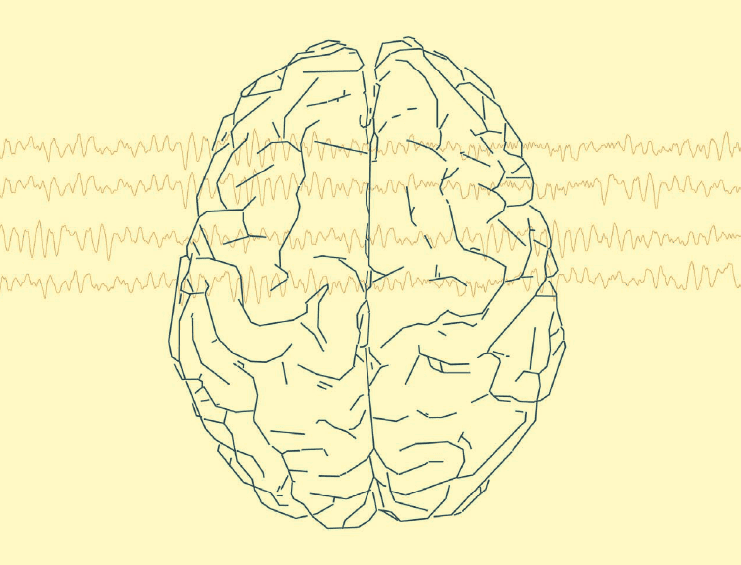
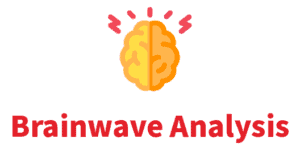
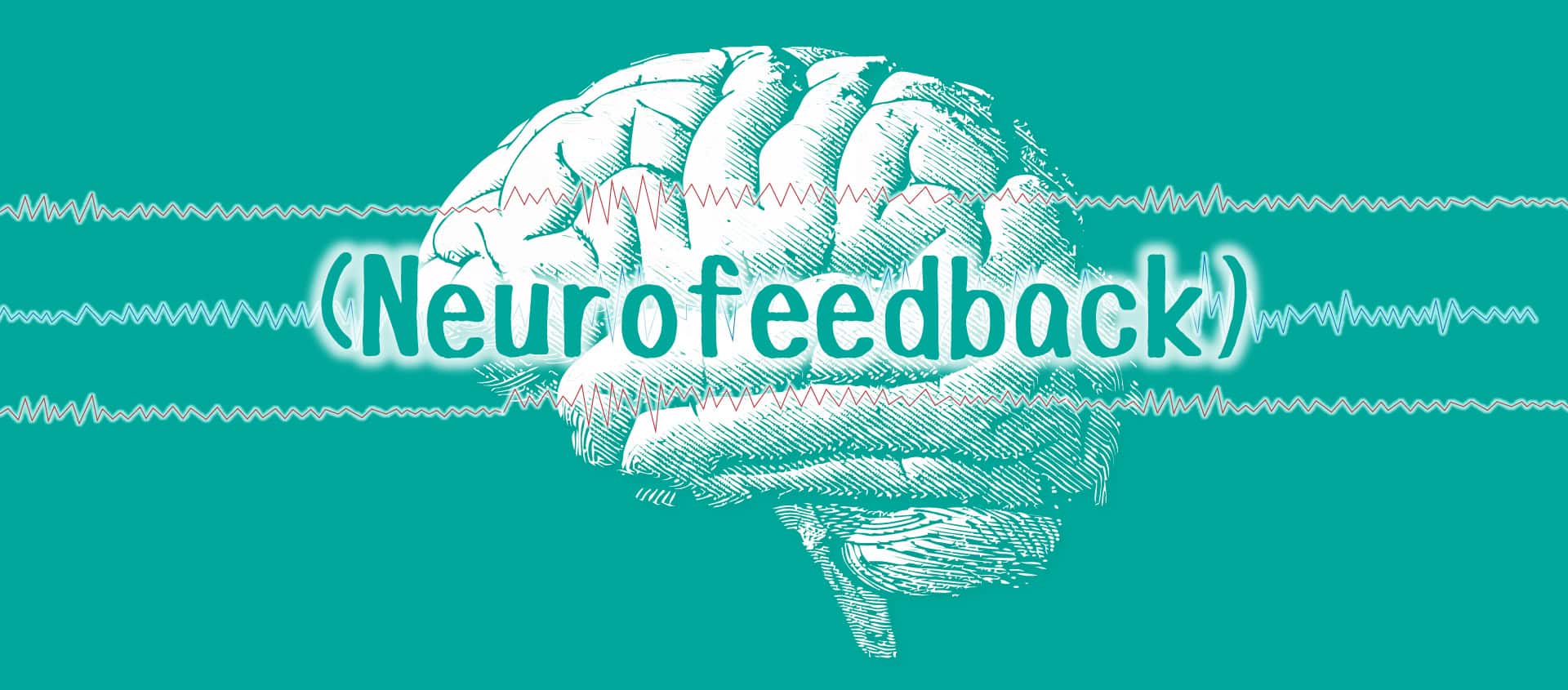
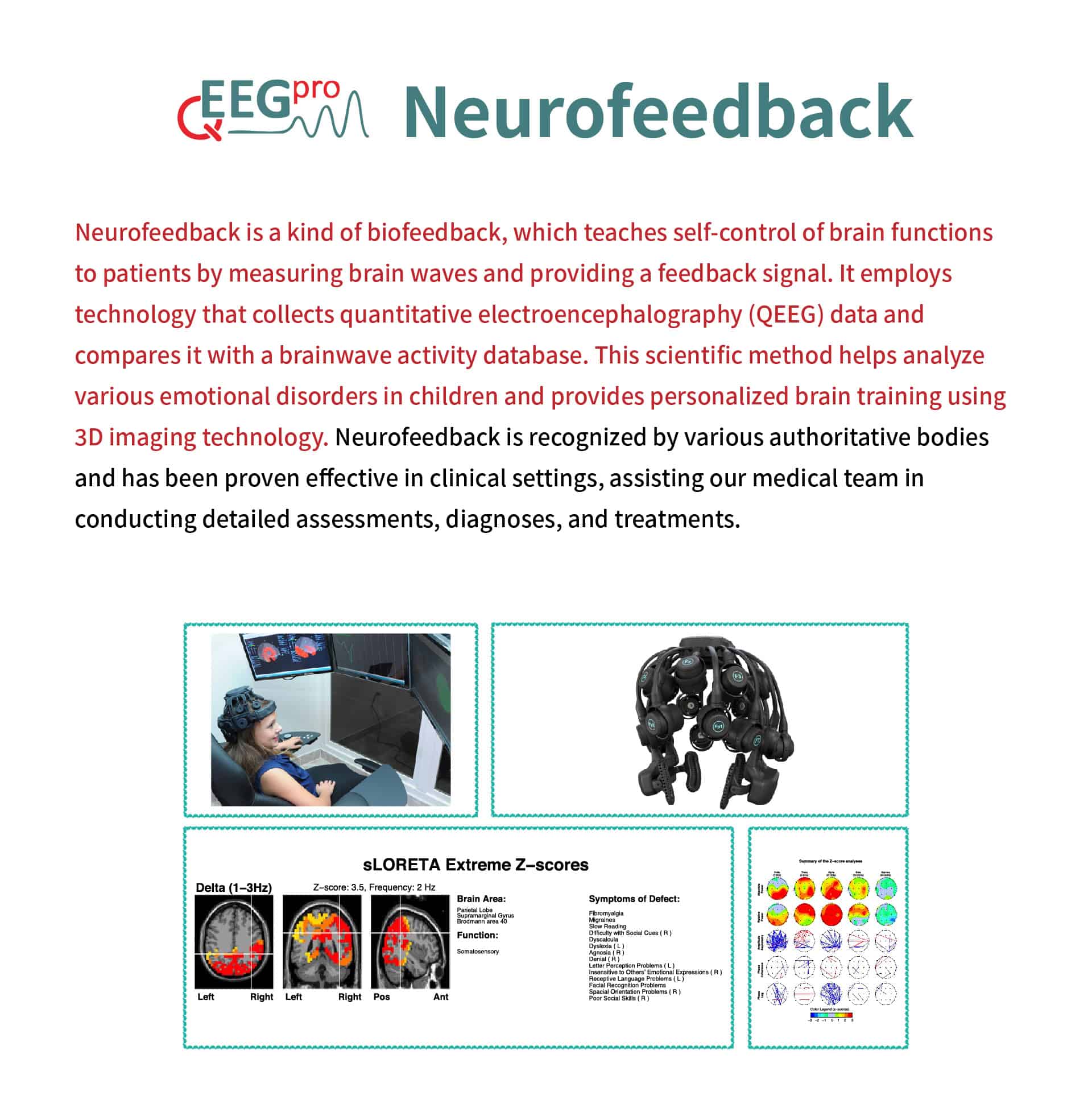
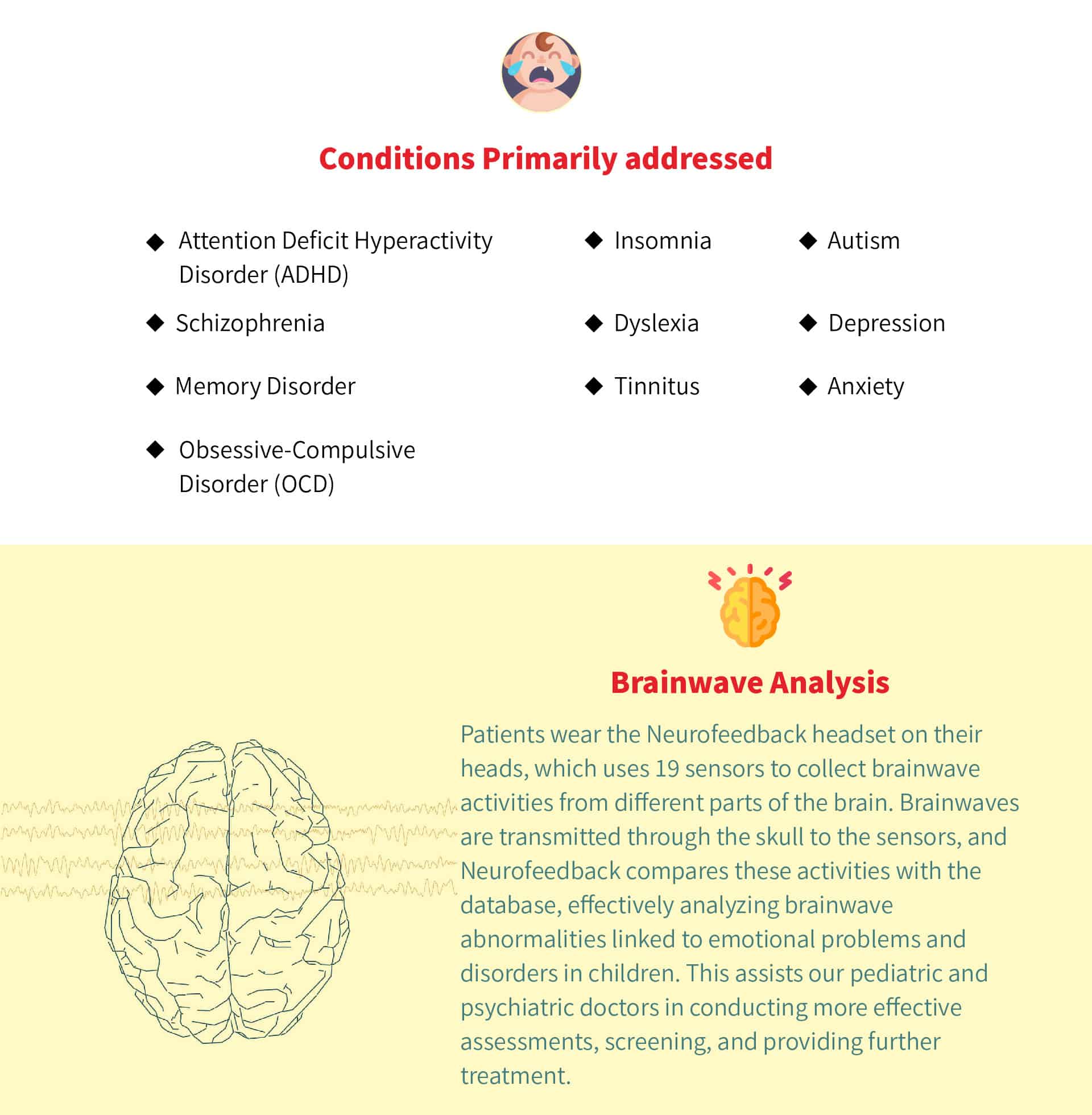
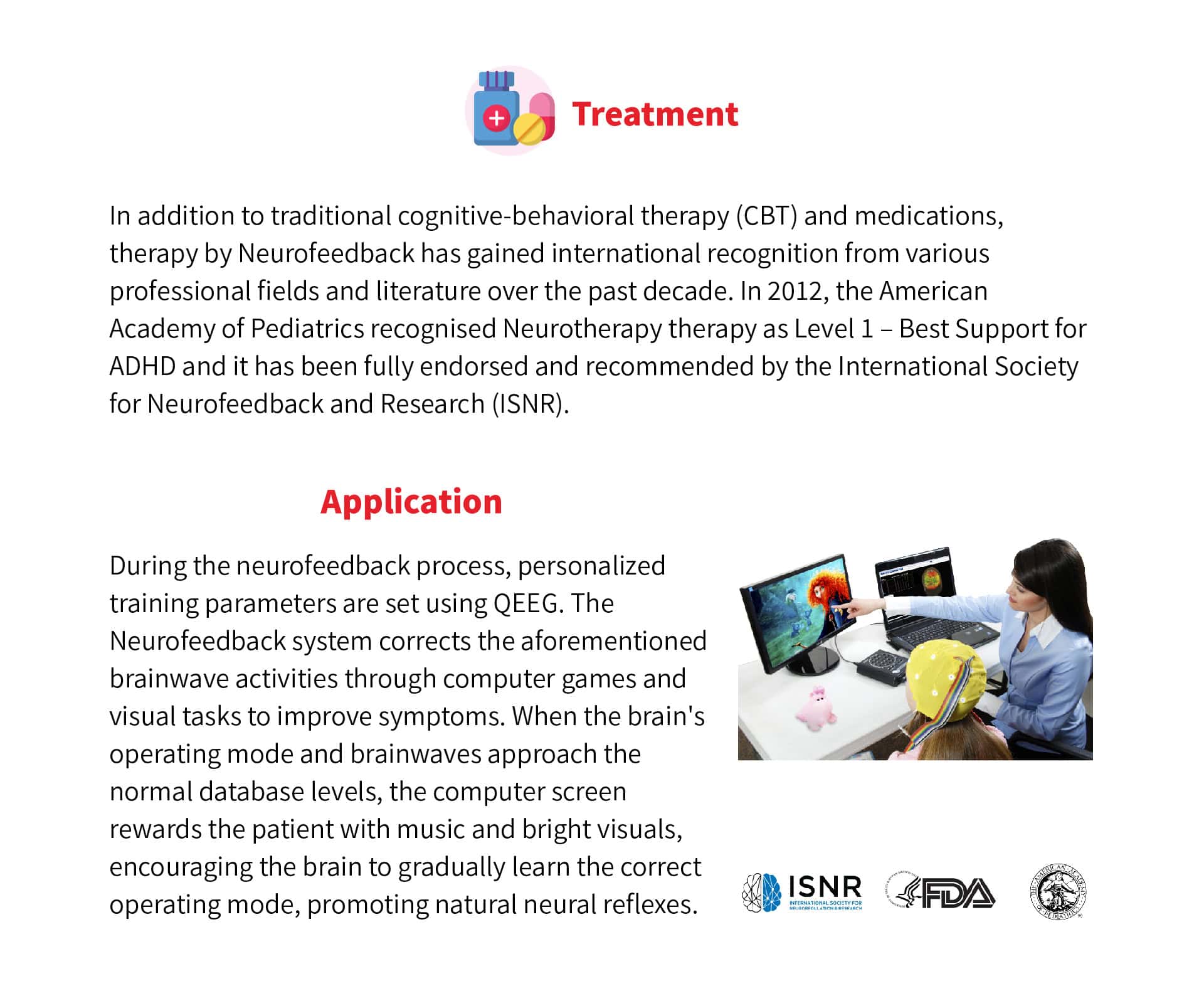
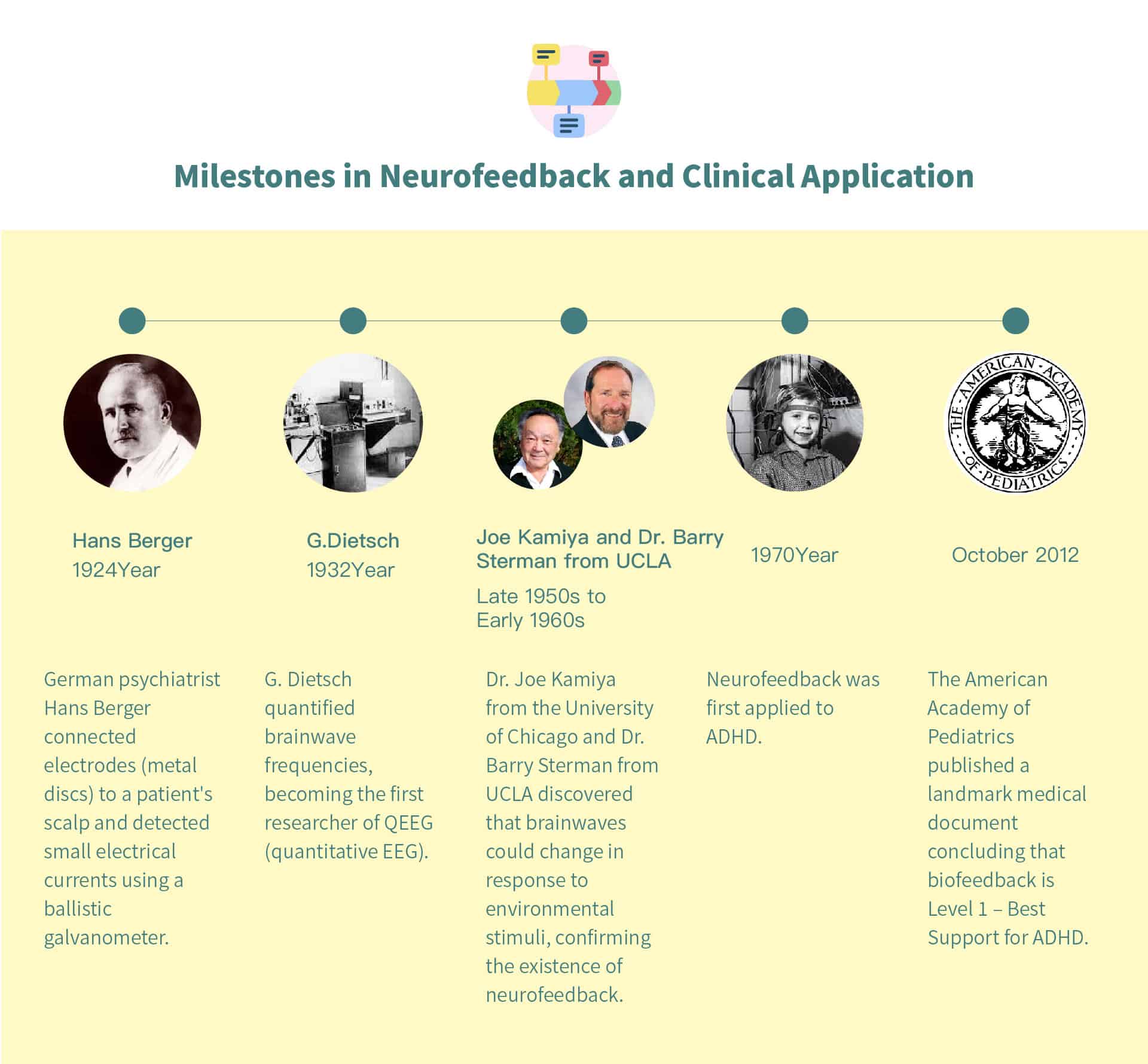

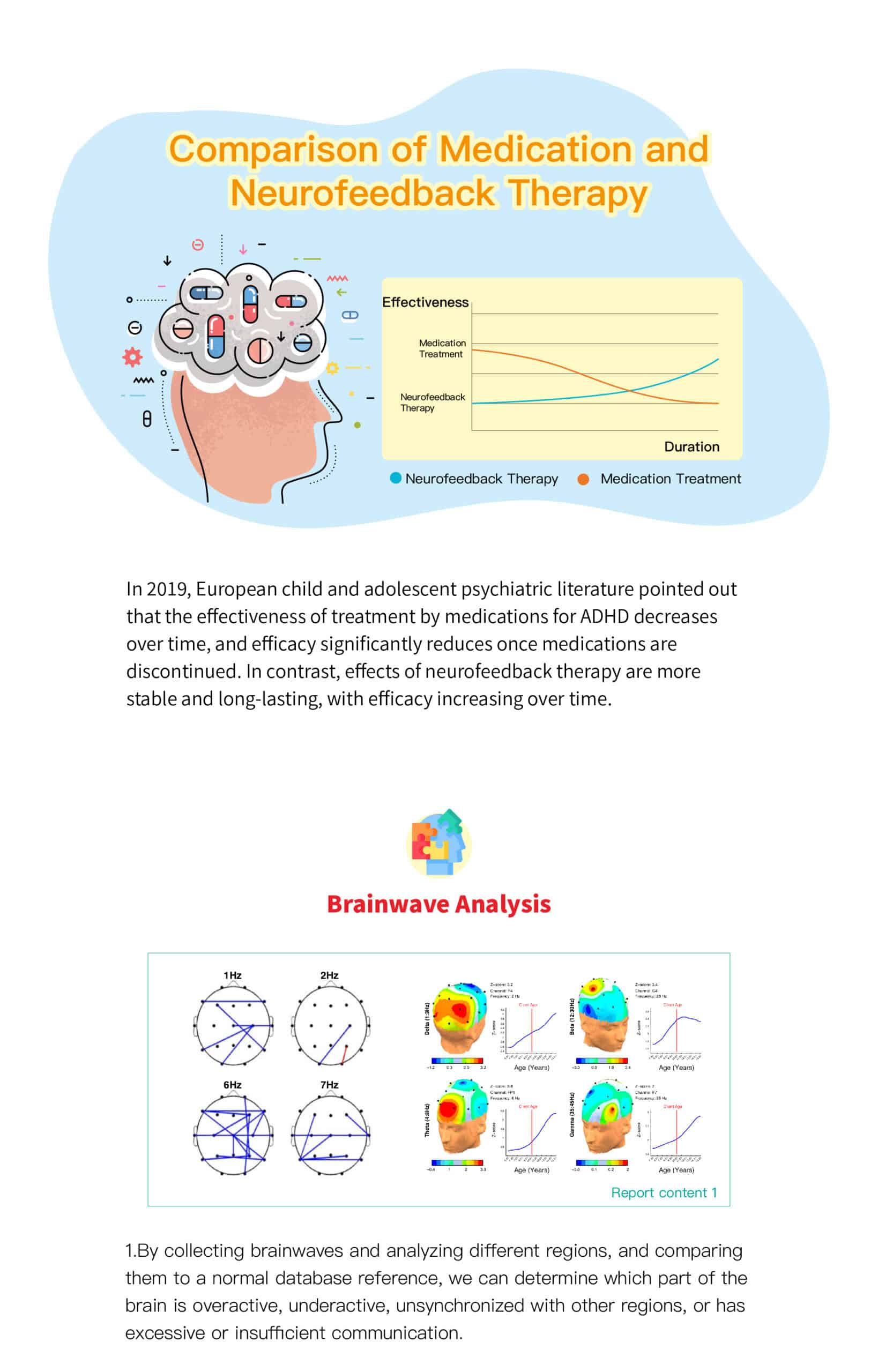
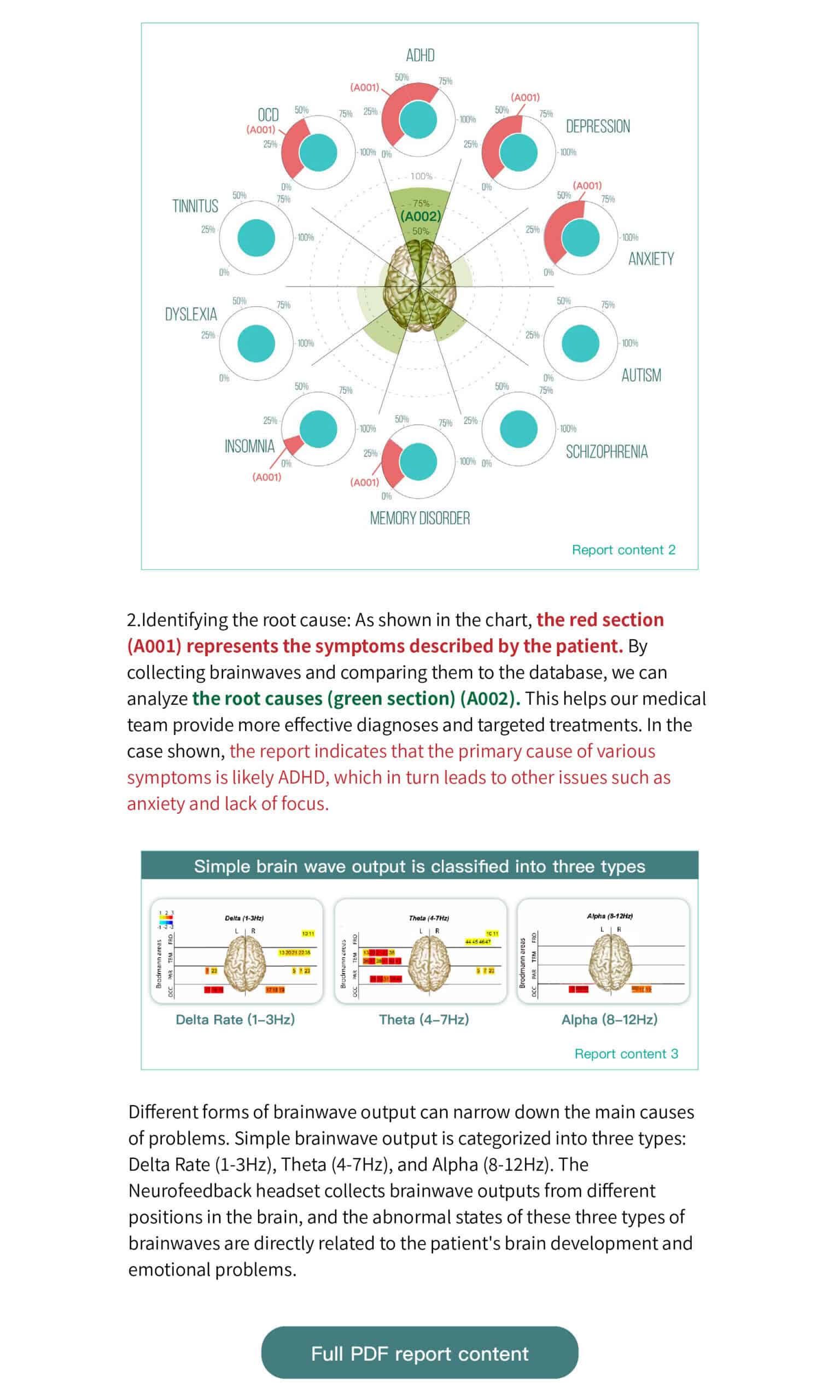
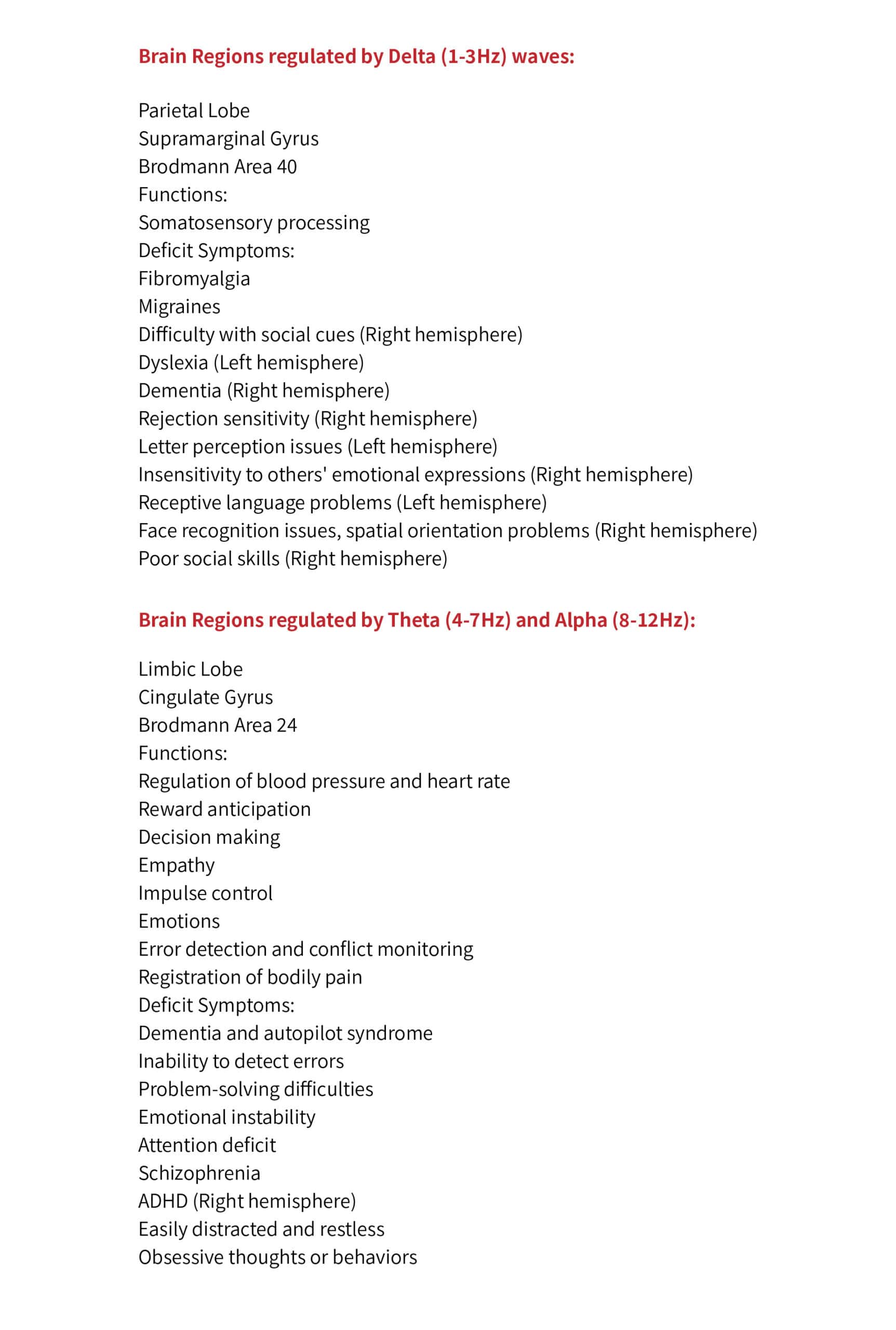
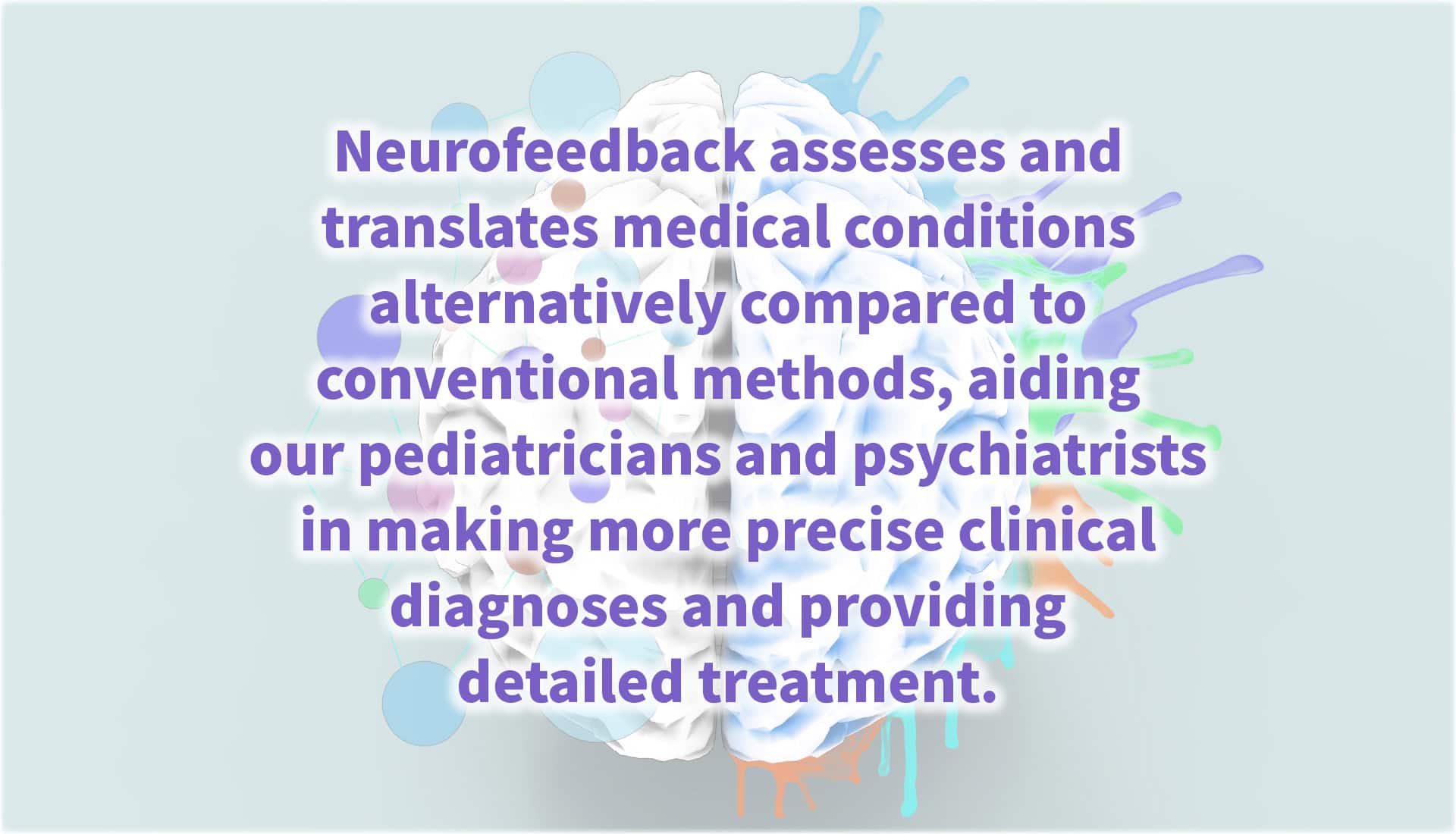
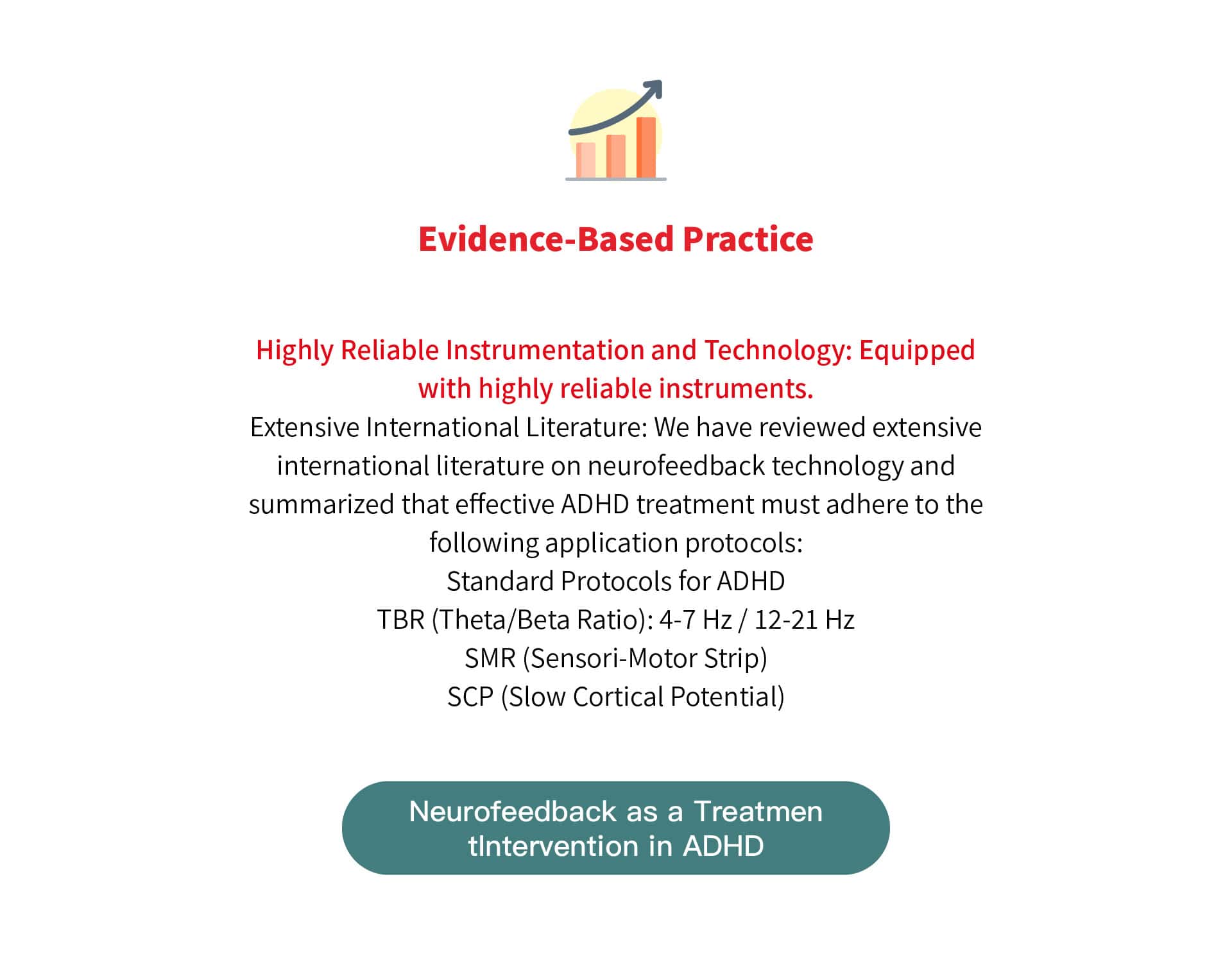
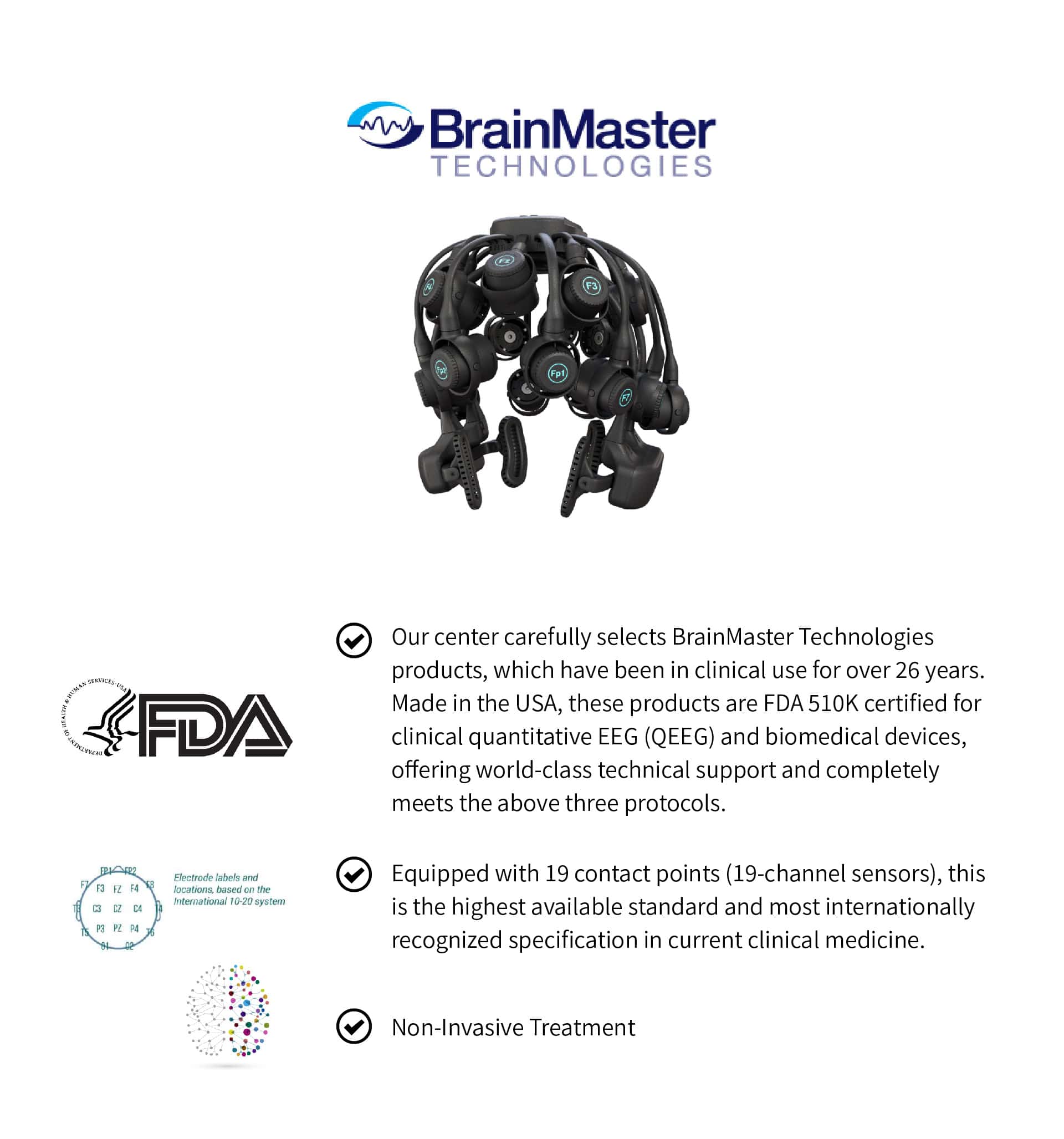
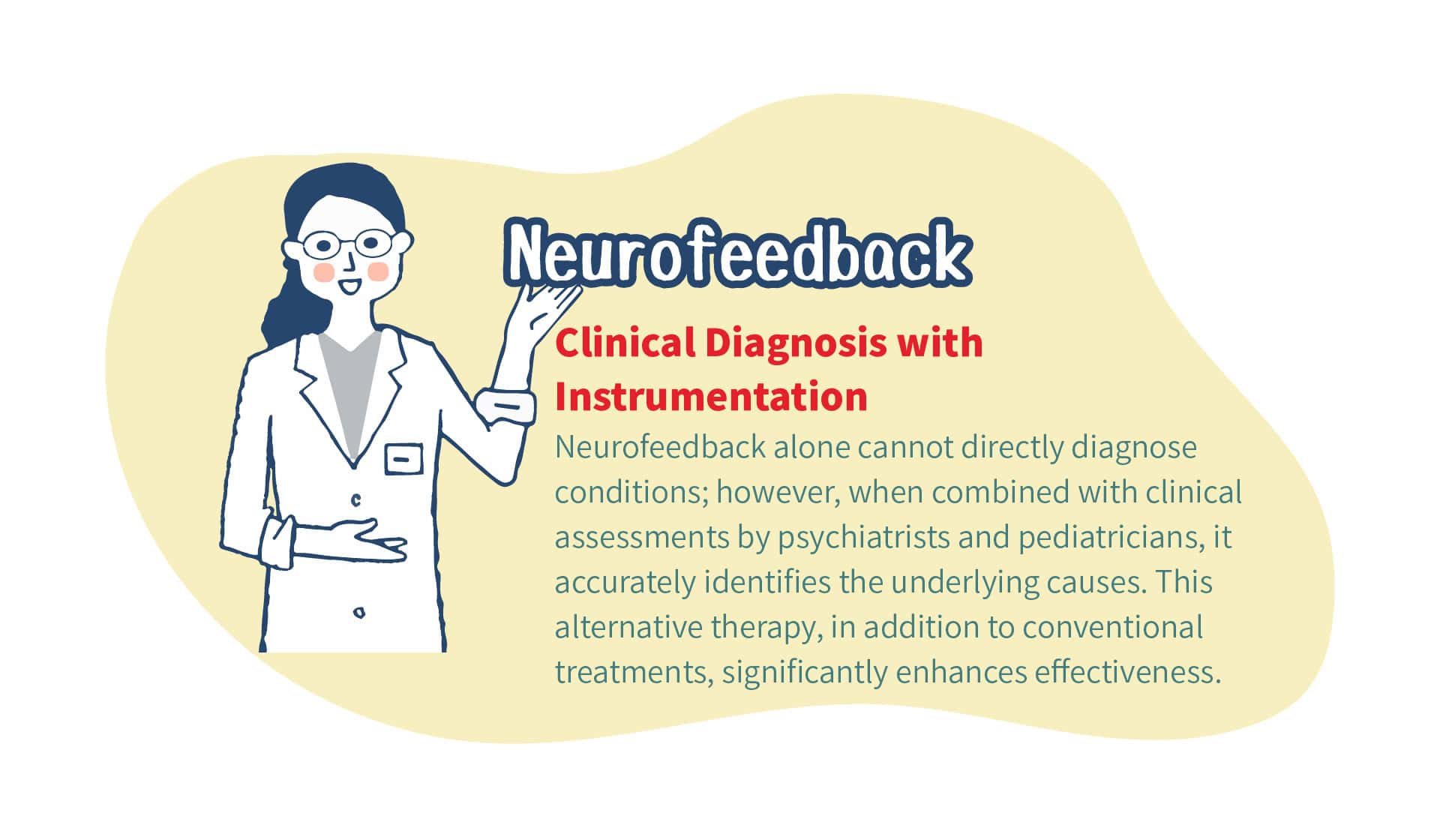
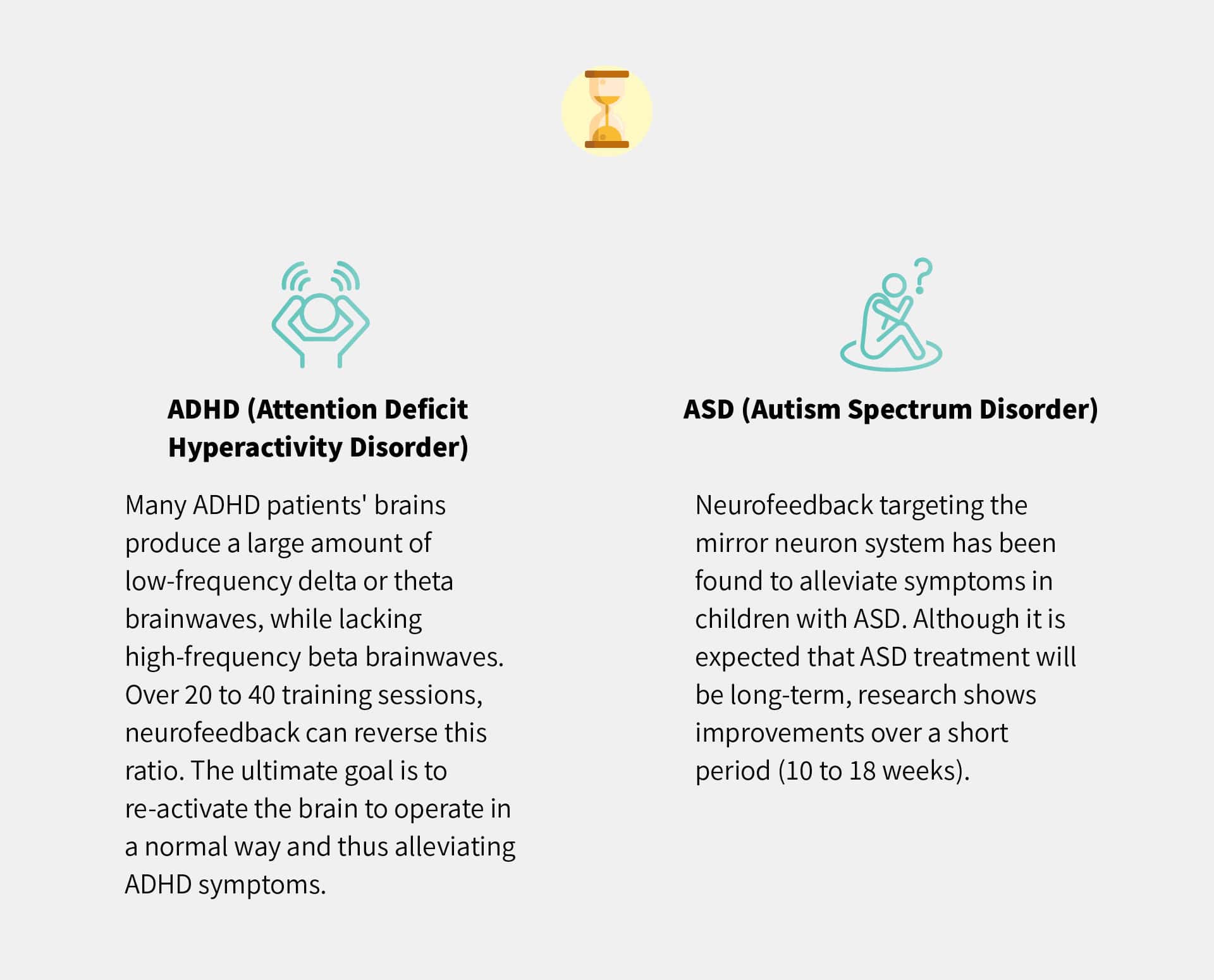

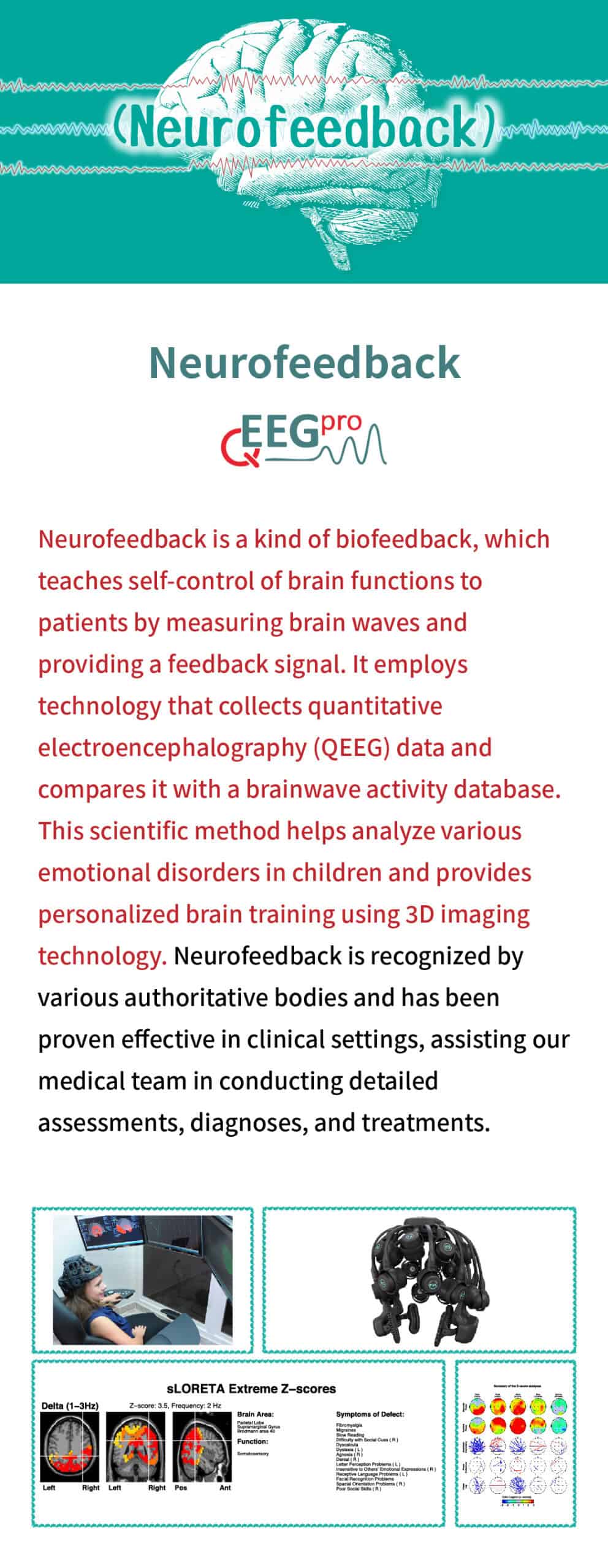

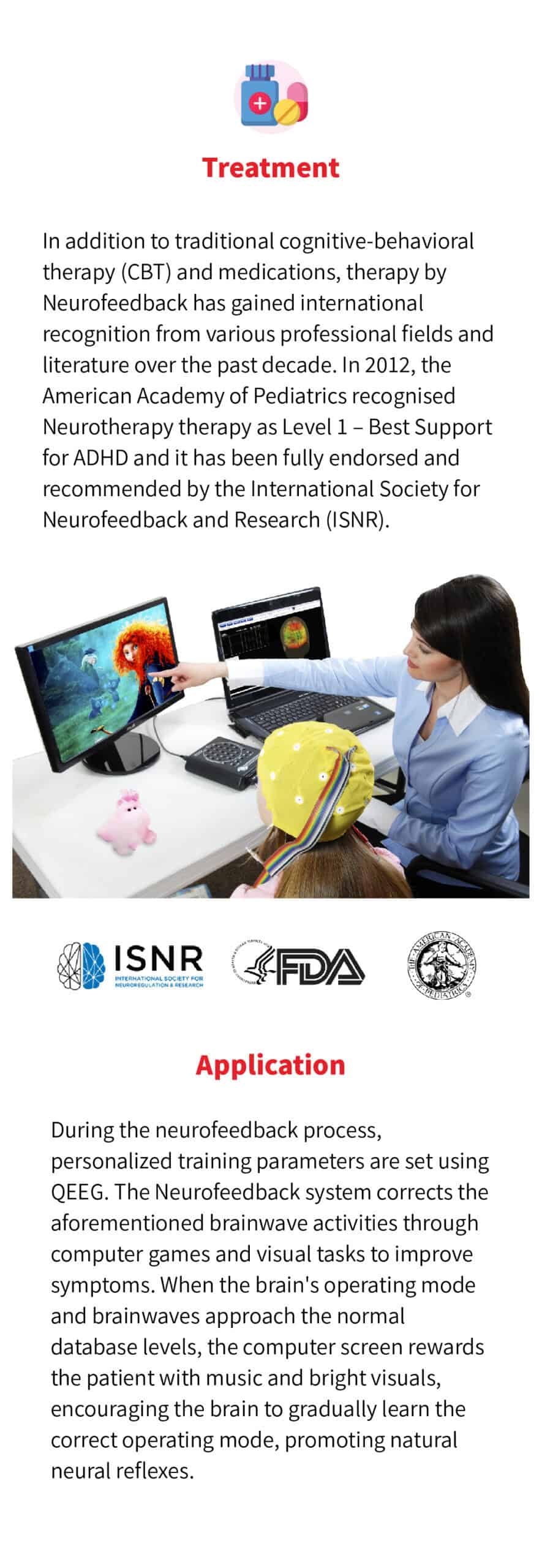
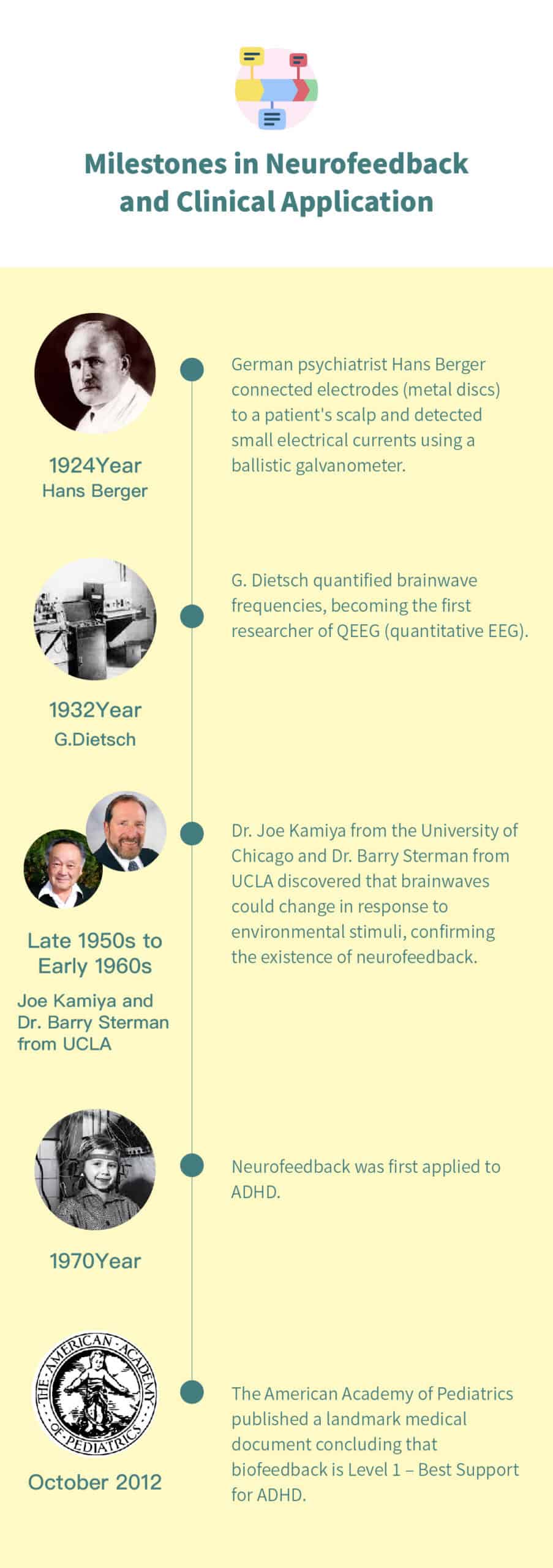



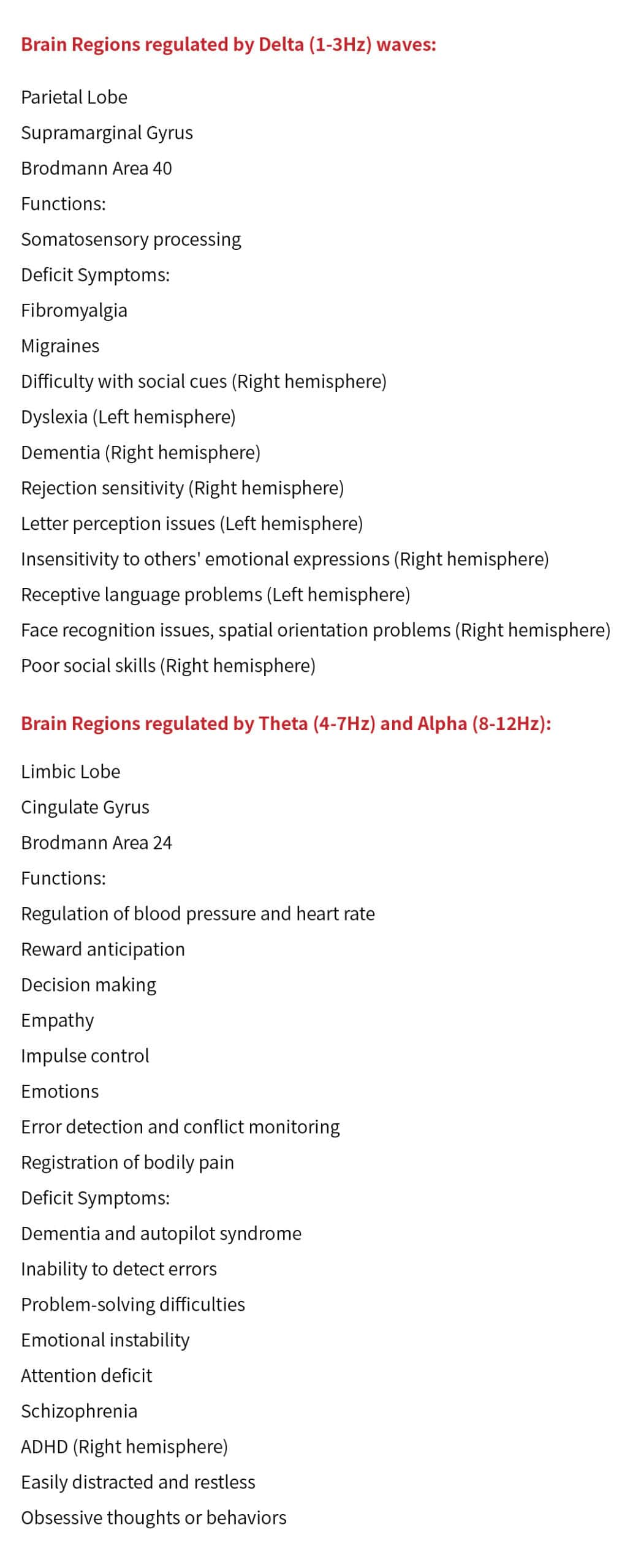
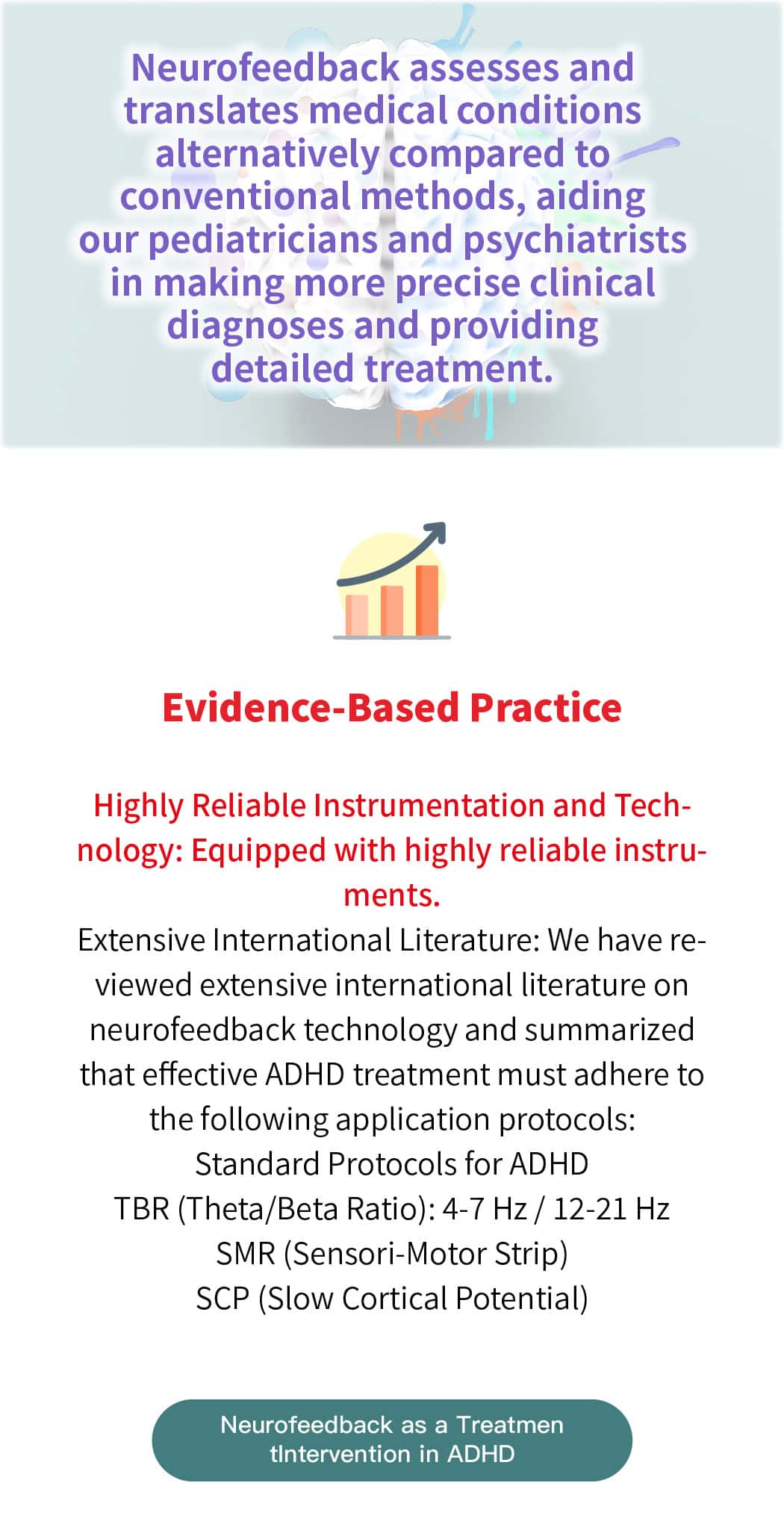
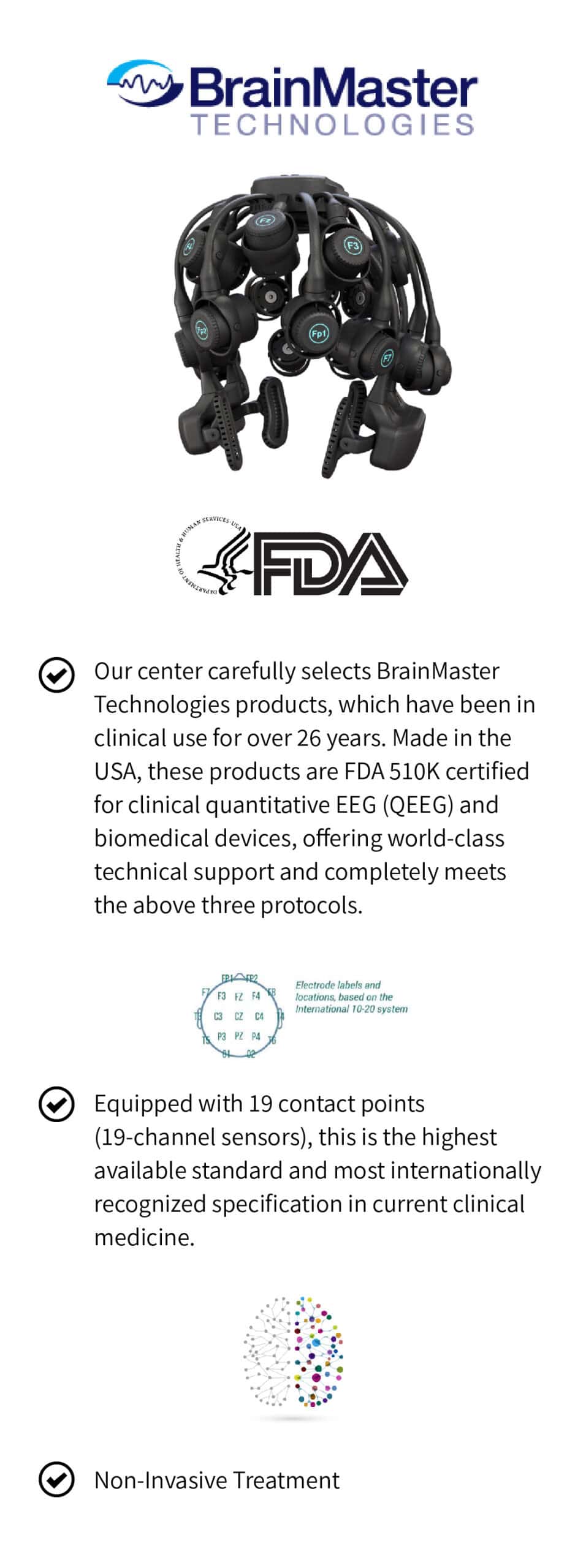
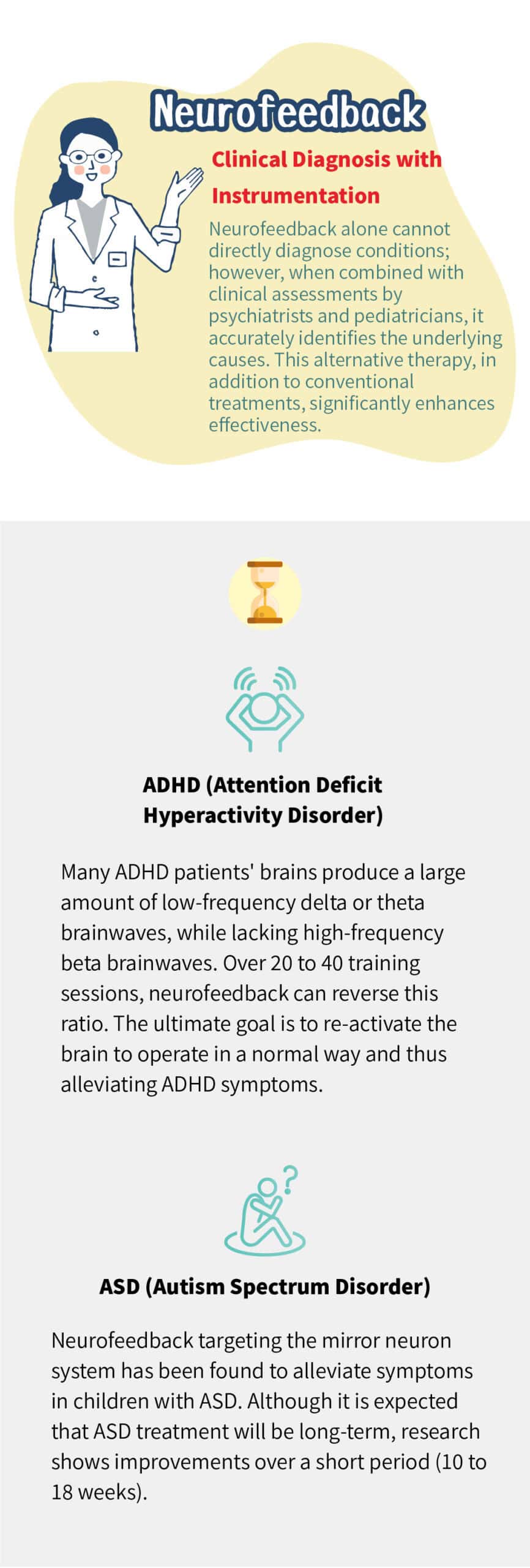
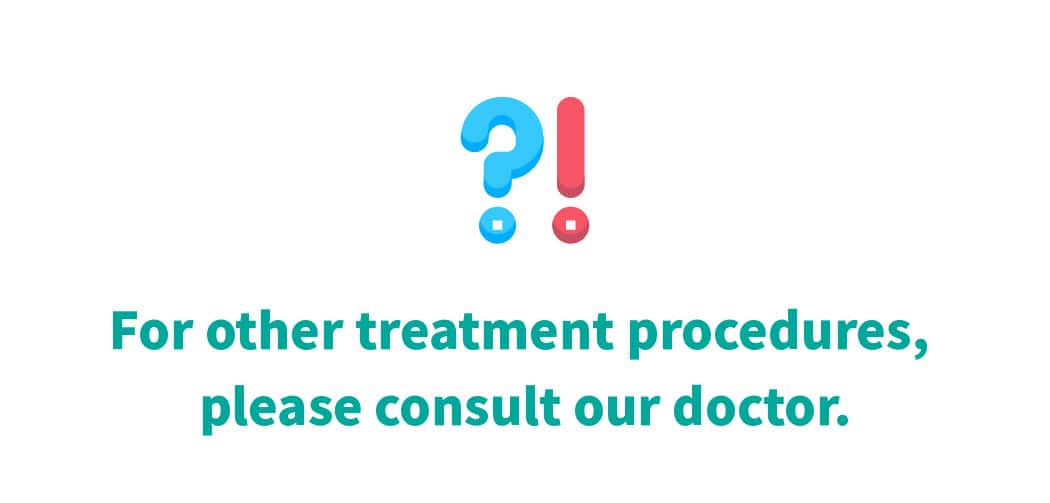

Neurofeedback is a kind of biofeedback, which teaches self-control of brain functions to patients by measuring brain waves and providing a feedback signal. Brainwave data is collected by quantitative EEG, which is compared with reference database This scientific approach helps analyze various emotional disorders in children and provides personalized brain training protocols using 3D imaging technology. The biomarkers collected from QEEG had undergone tremendous research in correlating with the various emotional, neuropsychiatric conditions. It greatly assists our medical team in conducting detailed assessments, diagnosis and treatments.
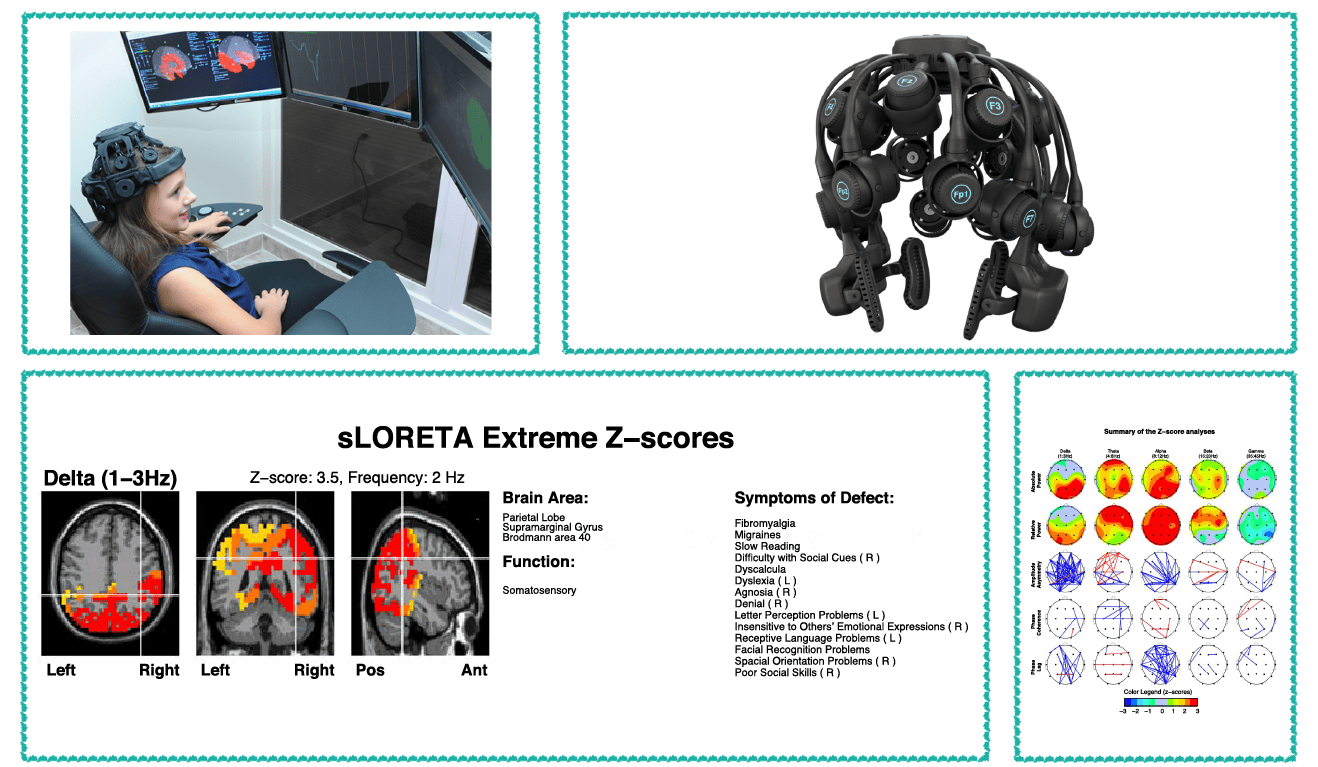

♦Attention Deficit Hyperactivity Disorder (ADHD)
♦Schizophrenia
♦Memory Disorder
♦Obsessive-Compulsive Disorder (OCD)
♦Insomnia
♦Dyslexia
♦Tinnitus
♦Autism
♦Depression
♦Anxiety


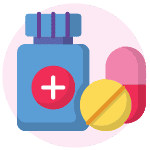
In addition to traditional cognitive-behavioral therapy (CBT) and medications, Neurofeedback has gained international recognition from various professional fields and literature over the past decade. In 2012, the American Academy of Pediatrics recognised Neurofeedback as Level 1 – Best Support for ADHD and it has been fully endorsed and recommended by the International Society for Neurofeedback and Research (ISNR).
During the neurofeedback process, personalized training parameters are established using qEEG. The Neurofeedback system then modifies the identified brainwave activities through interactive computer games and visual tasks , aiming to alleviate symptoms effectively. When the brain’s operating mode and brainwaves align with the normal database levels, the computer screen rewards the patient with sound and bright visual. This feedback encourages the brain to gradually learn the correct operating mode, promoting natural neural reflexes.
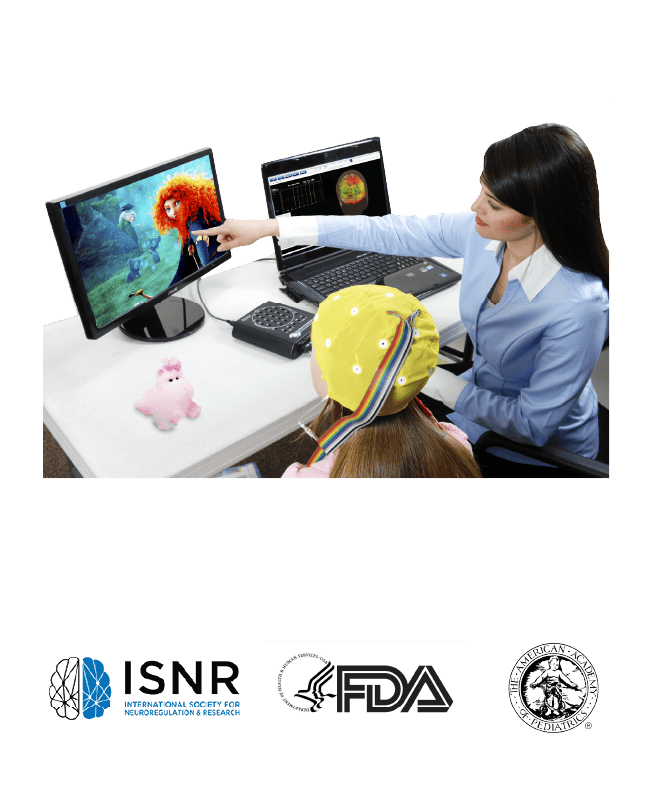
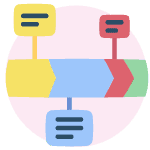
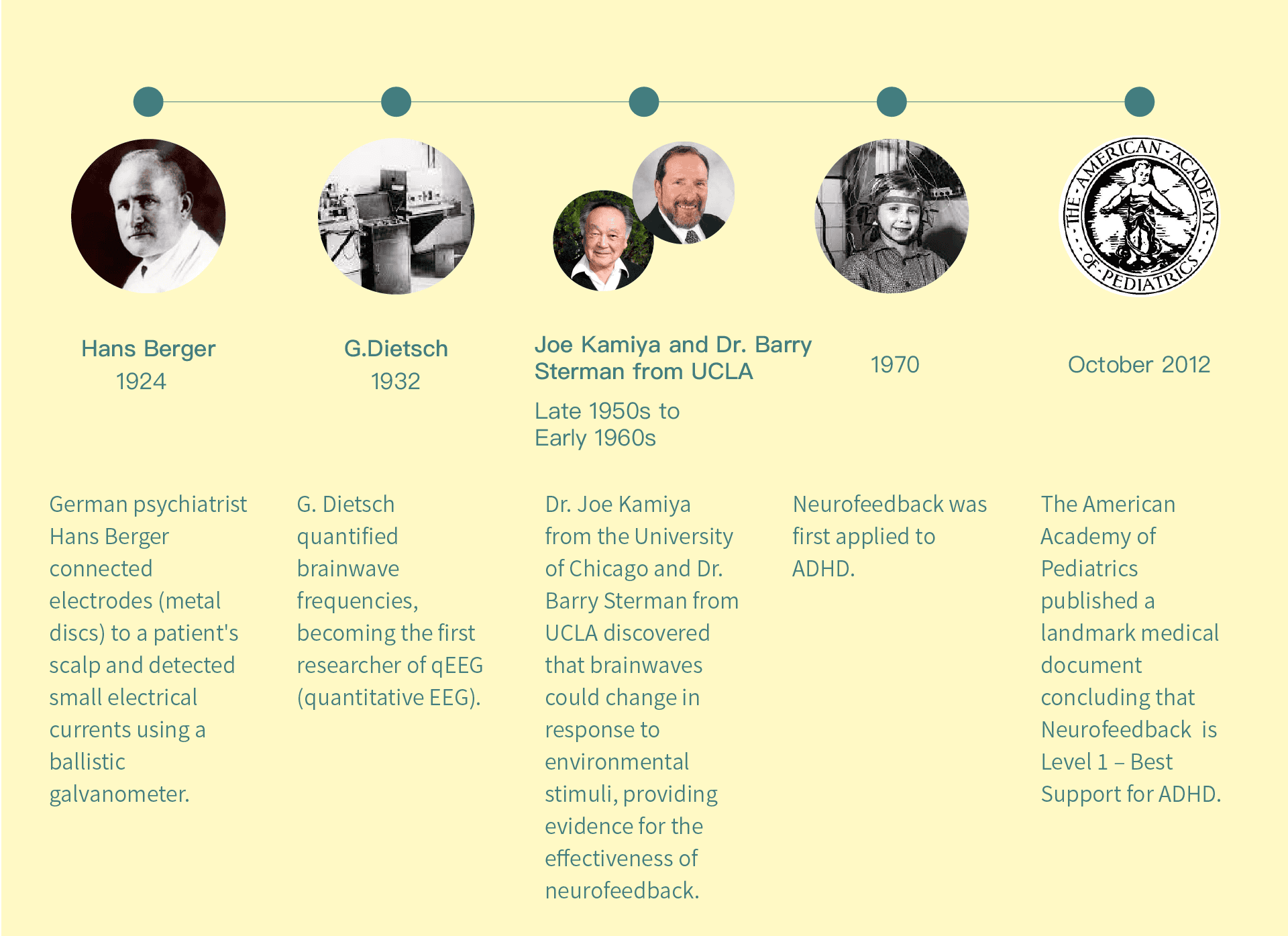
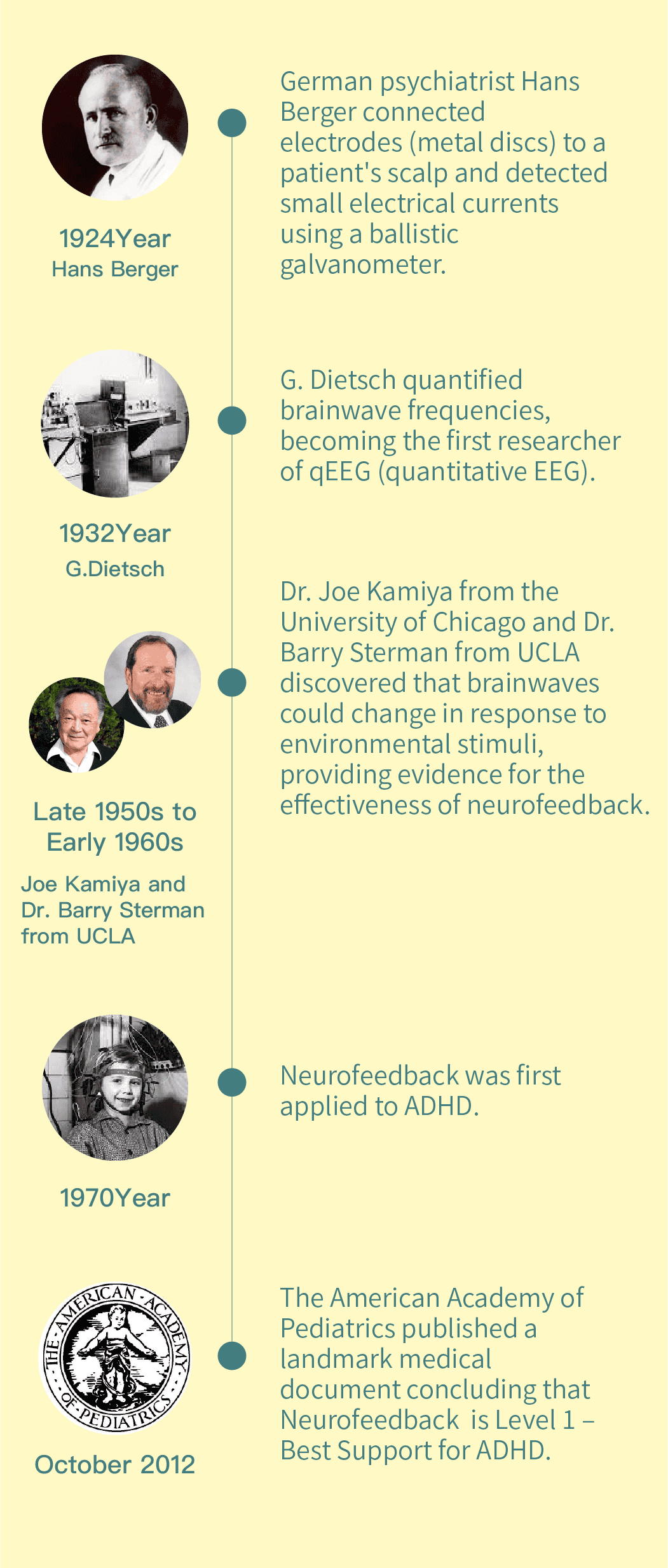

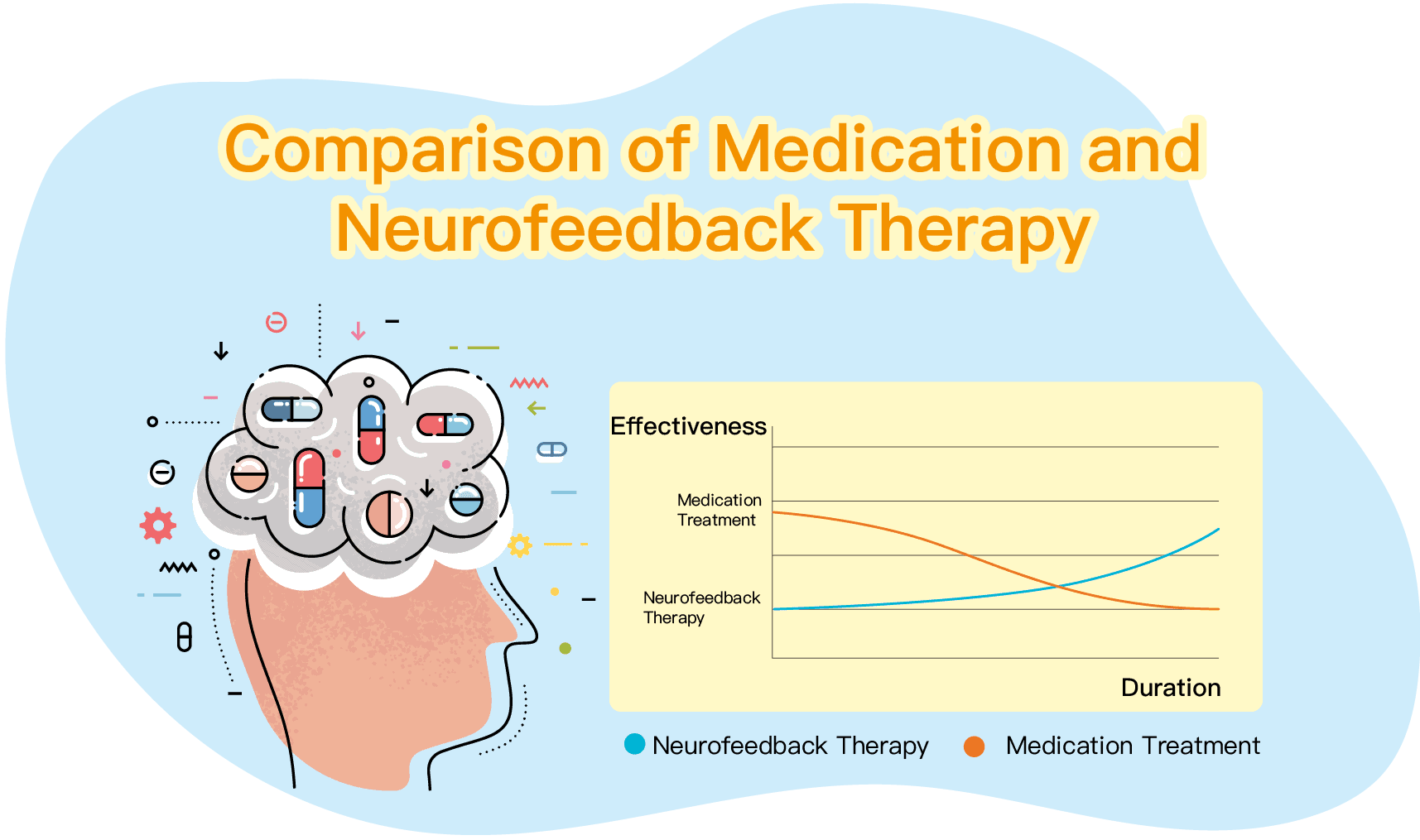
In 2019, European child and adolescent psychiatric literature pointed out that the effectiveness of medication treatment for ADHD decreases over time, and efficacy significantly reduces once the medications are discontinued. In contrast, effects of neurofeedback are more stable and long-lasting.
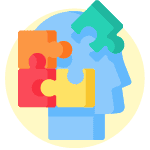
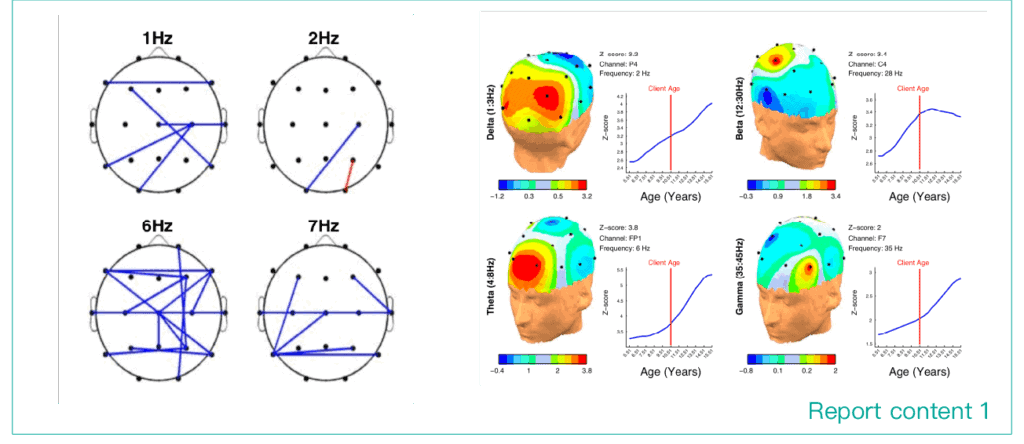
1.By collecting brainwaves and analyzing different regions, and comparing them to a normal database reference, we can determine which part of the brain is overactive, underactive, unsynchronized with other regions, or has excessive or insufficient communication.
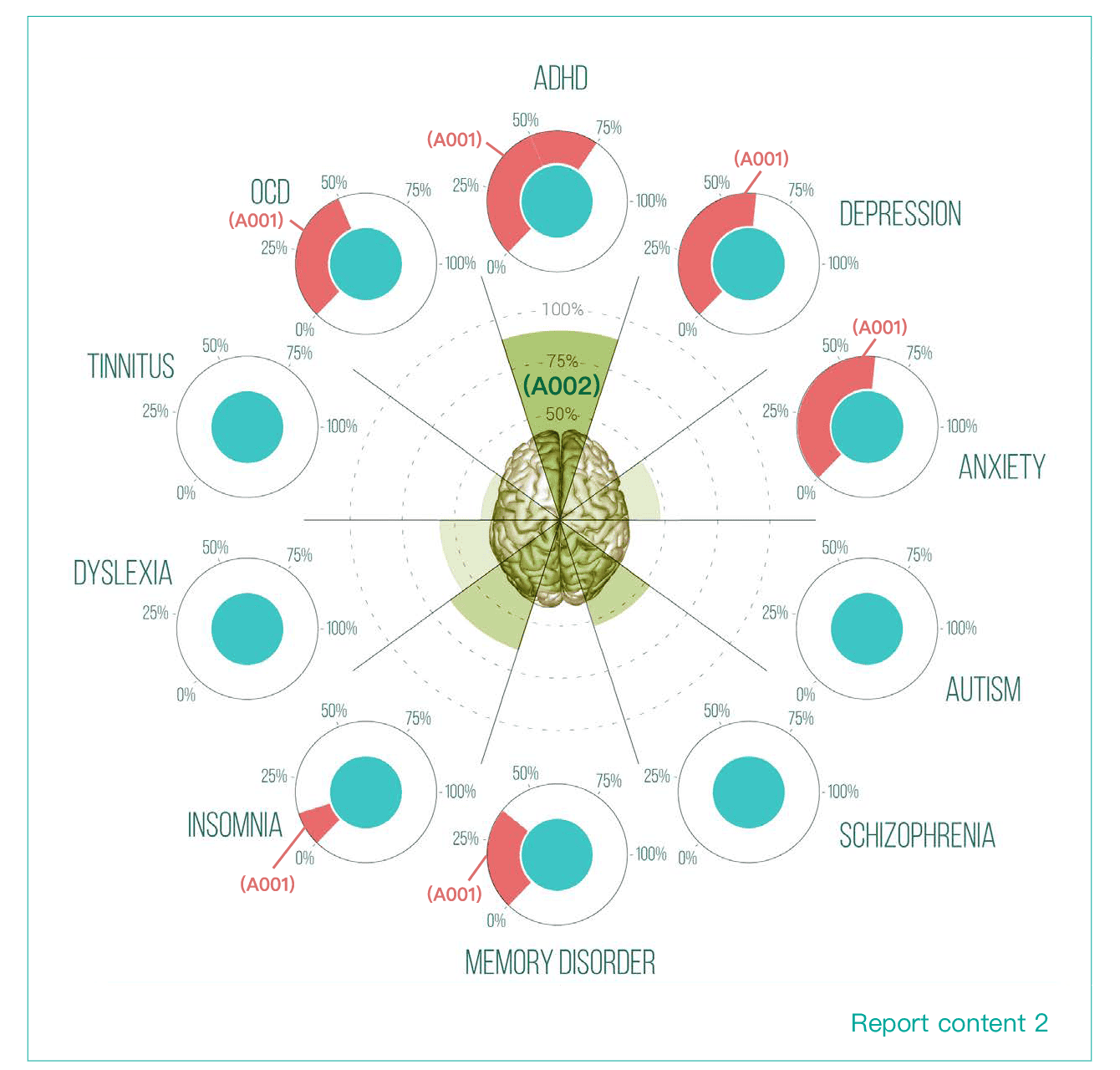
2.Identifying the root cause: As shown in the chart, the red section (A001) represents the symptoms described by the patient. By collecting brainwaves and comparing them to the database, we can analyze the root causes (green section) (A002). This helps our medical team provide more effective diagnoses and targeted treatments. In the case shown, the report indicates that the primary cause of various symptoms is likely ADHD, which in turn leads to other issues such as anxiety and lack of focus.
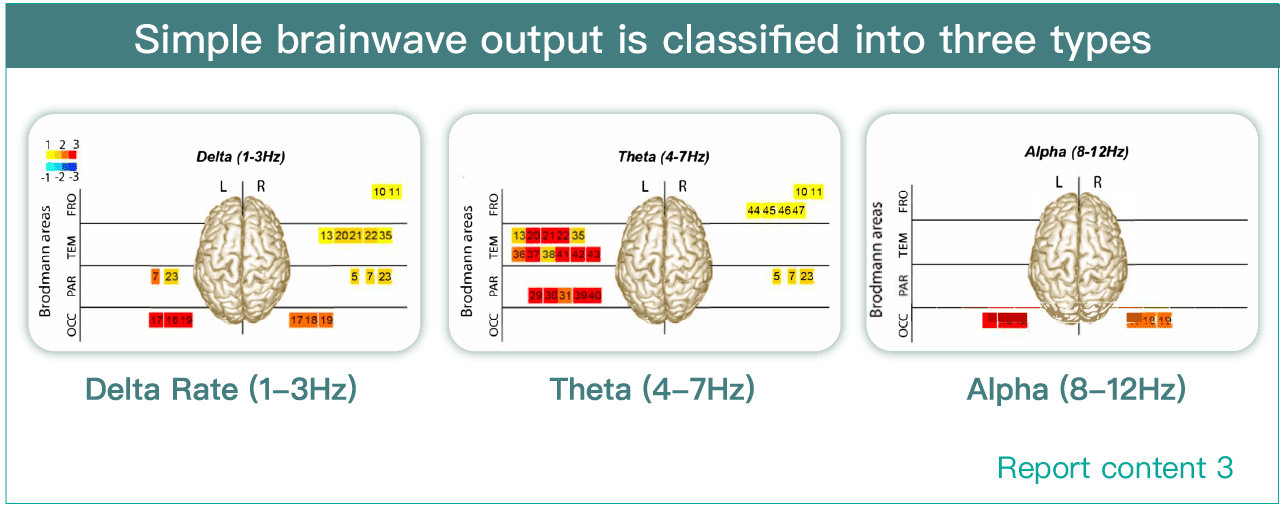
Different forms of brainwave output can narrow down the main causes of problems. Simple brainwave output is categorized into three types: Delta Rate (1-3Hz), Theta (4-7Hz), and Alpha (8-12Hz). The Neurofeedback headset collects brainwave outputs from different regions in the brain, and the abnormal states of these three types of brainwaves are directly related to the patient’s brain development and emotional problems.

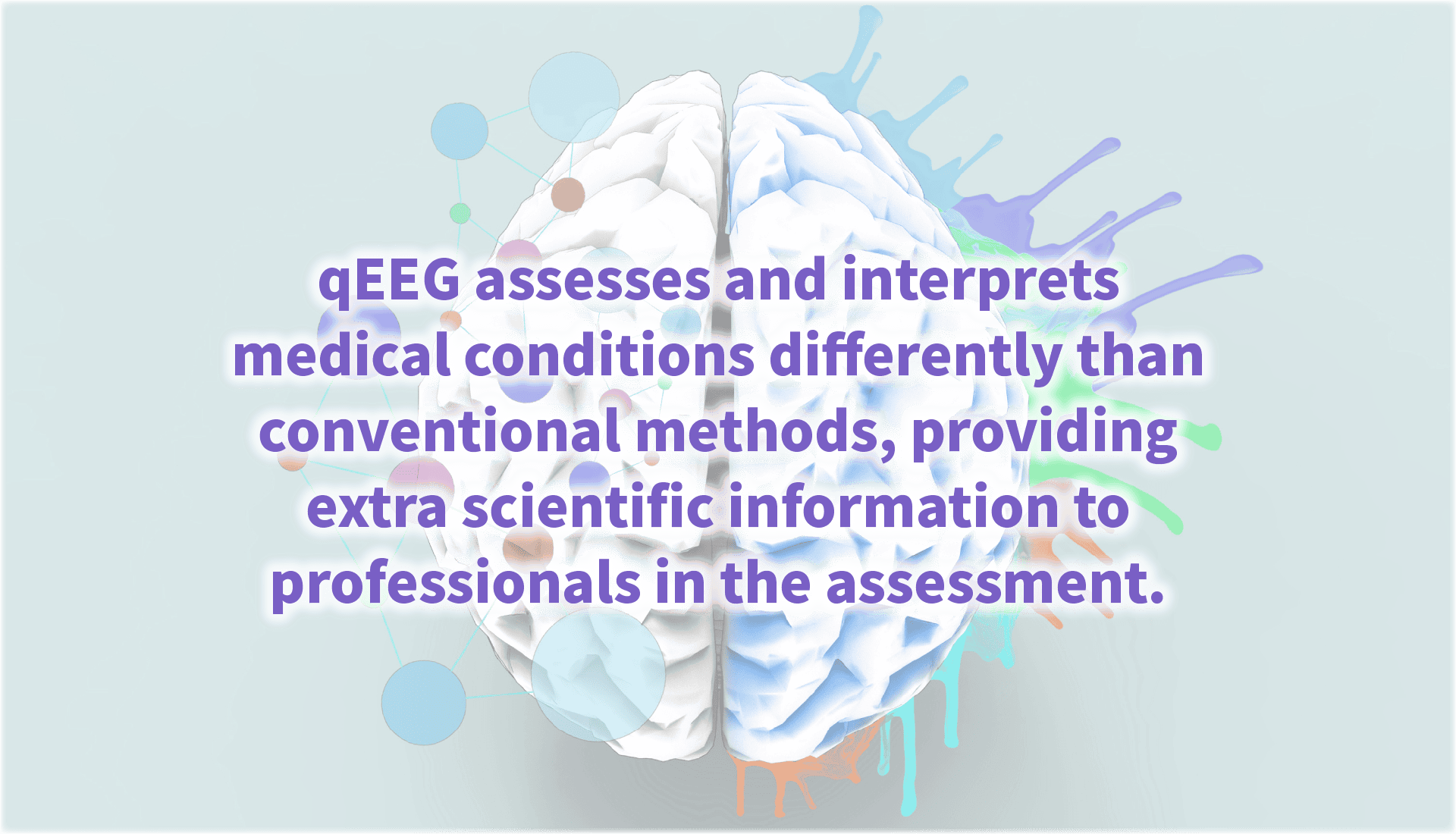

Highly Reliable Instrumentation and Technology: Equipped with highly reliable instruments.
Extensive International Literature: We have reviewed extensive international literature on neurofeedback technology and summarized that effective ADHD treatment must adhere to the following application protocols: Standard Protocols for ADHD
● 1.TBR (Theta/Beta Ratio): 4-7 Hz / 12-21 Hz
● 2.SMR (Sensori-Motor Strip)
● 3.SCP (Slow Cortical Potential)

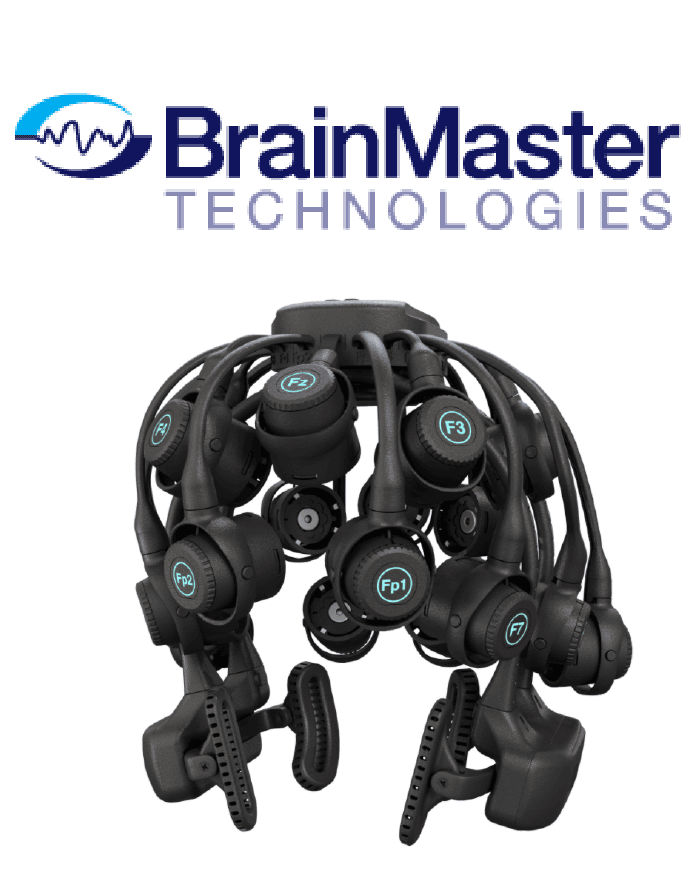
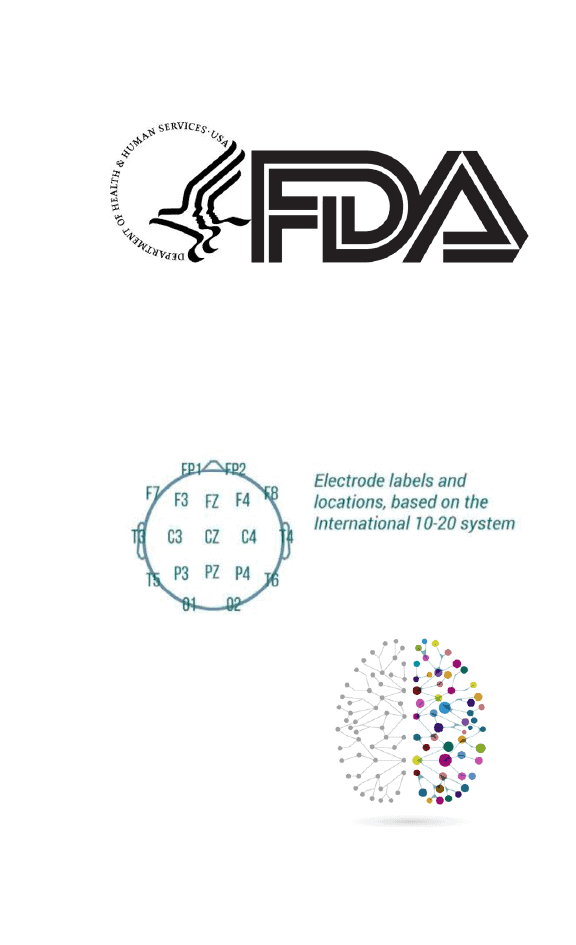
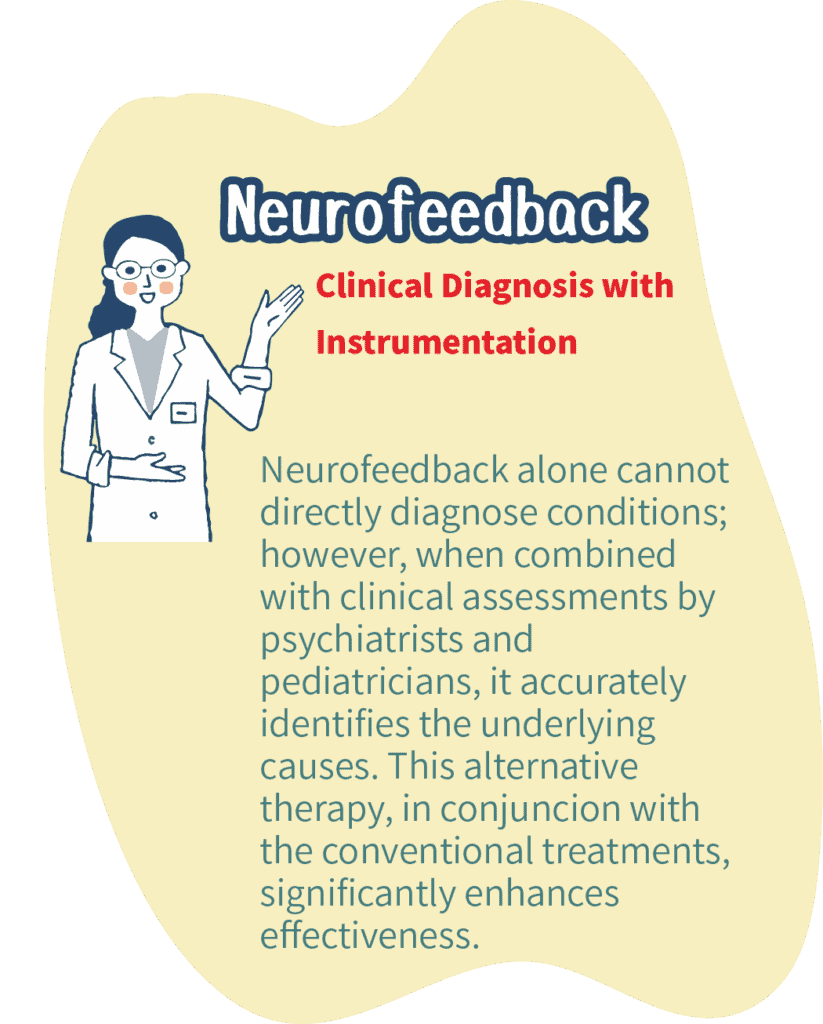

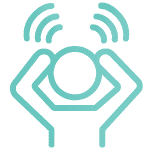
Many ADHD patients’ brains produce a large amount of low-frequency delta or theta brainwaves, while lacking high-frequency beta brainwaves. Over 20 to 40 training sessions, neurofeedback can reverse this ratio. The ultimate goal is to re-activate the brain to function normally thereby alleviating ADHD symptoms.

Neurofeedback targeting the mirror neuron system has been found to alleviate symptoms in children with ASD. Although it is expected that ASD treatment will be long-term, research shows improvements in social, emotional and behavioural functioning after a training period of 10-18 weeks

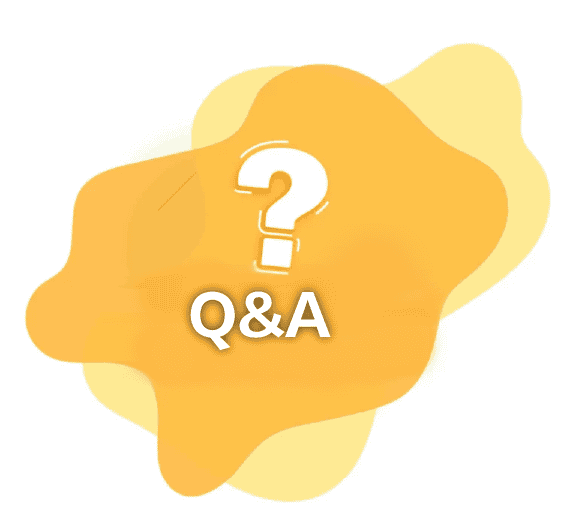
qEEG is typically used to assess brain function and diagnose various neuropsychological conditions. qEEG is most effective for the following symptoms and conditions:
qEEG data can be used to develop personalized treatment plans and corresponding therapy.
qEEG is applicable across all age groups, primarily used for children (ages 2 and above, specific suitability requires a doctor’s evaluation). It is non-invasive and has no side effects, therefore itis suitable even for
However, the most effective approach is typically to combine qEEG with other interventions (such as psychotherapy, behavioral therapy, and medication) to improve concentration and reduce hyperactivity, achieving optimal results.
Although qEEG can provide objective data about brain function and help identify neurophysiological characteristics, it is not a direct treatment method for autism spectrum disorder (ASD). The following are the uses of qEEG in ASD
However, qEEG primarily serves as an auxiliary tool to help understand individual needs rather than being a standalone treatment option. The most effective treatment typically requires the combination of other methods, such as behavioral therapy, speech therapy, and social skills training.
The training frequency, duration, and number of sessions for qEEG typically vary based on individual needs and treatment plans. Here are some general guidelines:
Doctors will tailor these parameters to each person’s specific situation to ensure optimal treatment outcomes.
qEEG shows great potential in accurately assessing behavioral triggers, particularly in identifying theroot causes of specific behavioral issues, such as anxiety triggered by ADHD. By analyzing brainwave patterns, qEEG can reveal the activity patterns in the brain during specific behaviors (like anxiety and impulsive actions). These activities are presented in different waveforms, which are closely linked to various psychological states and behavioral responses. This analytical approach enables professionals to more accurately pinpoint the physiological basis of behavioral problems and facilitates the development of individualized treatment plans, ultimately improving the quality of life for patients.
qEEG is a safe, non-invasive assessment method that typically does not cause direct side effects for patients. However, some individuals may experience mild discomfort, such as temporary fatigue, headaches, or mood fluctuations, which are usually short-termand tend to lessen with training. Additionally, patients may feel anxious about the assessment process or the results. Therefore, it is advisable to discuss any concerns with a doctor before undergoing the examination.
Beforeundergoing a QEEG assessment, patients need to prepare adequately to ensure the accuracy and smoothness of the procedure. Here are the key preparation steps:
In conclusion, Luxmed qEEG offers a safe and effective neurotraining solution for patients through its advanced technology, multi-point detection, internationally recognized standards, non-invasive nature, and personalized training plans.